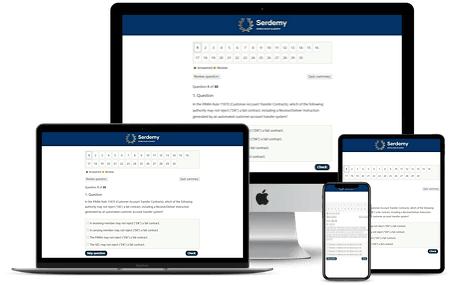Quiz-summary
0 of 30 questions completed
Questions:
- 1
- 2
- 3
- 4
- 5
- 6
- 7
- 8
- 9
- 10
- 11
- 12
- 13
- 14
- 15
- 16
- 17
- 18
- 19
- 20
- 21
- 22
- 23
- 24
- 25
- 26
- 27
- 28
- 29
- 30
Information
Premium Practice Questions
You have already completed the quiz before. Hence you can not start it again.
Quiz is loading...
You must sign in or sign up to start the quiz.
You have to finish following quiz, to start this quiz:
Results
0 of 30 questions answered correctly
Your time:
Time has elapsed
Categories
- Not categorized 0%
- 1
- 2
- 3
- 4
- 5
- 6
- 7
- 8
- 9
- 10
- 11
- 12
- 13
- 14
- 15
- 16
- 17
- 18
- 19
- 20
- 21
- 22
- 23
- 24
- 25
- 26
- 27
- 28
- 29
- 30
- Answered
- Review
-
Question 1 of 30
1. Question
An assessment of a proposed marketing strategy for a private placement reveals a critical compliance decision. Elias, a representative at a placement agent firm, is advising a technology startup on a capital raise under Regulation D. The startup’s CEO is adamant about issuing a press release and launching a targeted social media campaign to announce the investment opportunity to a wide audience. If the firm proceeds with the CEO’s marketing plan, what is the most significant compliance consequence that Elias must address?
Correct
The proposed marketing strategy, which includes a press release and a social media campaign to highlight an investment opportunity, constitutes general solicitation. Under the Securities Act of 1933, specifically Regulation D, conducting an offering using general solicitation requires the issuer and its placement agent to adhere to the provisions of Rule 506(c). While Rule 506(b) prohibits general solicitation, it allows for the inclusion of up to 35 non-accredited but sophisticated investors and permits the firm to rely on an investor’s self-certification of their accredited status. In contrast, Rule 506(c) permits general solicitation but imposes two critical and stricter conditions. First, sales may only be made to accredited investors; non-accredited investors are not permitted to purchase securities in a 506(c) offering under any circumstances. Second, and most significantly, the issuer or placement agent must take “reasonable steps to verify” that all purchasers are, in fact, accredited investors. This verification standard is a much higher bar than the self-attestation typically used in a 506(b) offering. It may involve reviewing an investor’s personal financial documents, such as tax returns or bank statements, or obtaining written confirmation from a qualified third party like a CPA, attorney, or registered investment adviser. Therefore, choosing to engage in general solicitation fundamentally alters the compliance obligations of the offering, shifting the requirements from those of Rule 506(b) to the more stringent verification and investor-type limitations of Rule 506(c).
Incorrect
The proposed marketing strategy, which includes a press release and a social media campaign to highlight an investment opportunity, constitutes general solicitation. Under the Securities Act of 1933, specifically Regulation D, conducting an offering using general solicitation requires the issuer and its placement agent to adhere to the provisions of Rule 506(c). While Rule 506(b) prohibits general solicitation, it allows for the inclusion of up to 35 non-accredited but sophisticated investors and permits the firm to rely on an investor’s self-certification of their accredited status. In contrast, Rule 506(c) permits general solicitation but imposes two critical and stricter conditions. First, sales may only be made to accredited investors; non-accredited investors are not permitted to purchase securities in a 506(c) offering under any circumstances. Second, and most significantly, the issuer or placement agent must take “reasonable steps to verify” that all purchasers are, in fact, accredited investors. This verification standard is a much higher bar than the self-attestation typically used in a 506(b) offering. It may involve reviewing an investor’s personal financial documents, such as tax returns or bank statements, or obtaining written confirmation from a qualified third party like a CPA, attorney, or registered investment adviser. Therefore, choosing to engage in general solicitation fundamentally alters the compliance obligations of the offering, shifting the requirements from those of Rule 506(b) to the more stringent verification and investor-type limitations of Rule 506(c).
-
Question 2 of 30
2. Question
Apex Capital is acting as the exclusive placement agent for QuantumLeap Robotics, a non-reporting issuer conducting a private placement under the Rule 506(c) exemption of Regulation D. The offering was marketed through a broadly disseminated press release and a dedicated offering website. Dr. Elena Vance, a neuroscientist with no prior relationship with Apex Capital, expresses interest after seeing an online advertisement. In her investor questionnaire, Dr. Vance indicates she qualifies as an accredited investor based on holding a Series 82 license in good standing. To fulfill its obligations under Rule 506(c), which of the following actions by Apex Capital would be considered insufficient to meet the “reasonable steps to verify” standard for Dr. Vance’s accredited investor status?
Correct
This scenario tests the heightened verification requirements under Rule 506(c) of Regulation D. When an issuer engages in general solicitation and advertising, it is restricted to selling securities only to accredited investors. Critically, the issuer or its placement agent must take “reasonable steps to verify” that all purchasers are indeed accredited. This is a more stringent standard than that of a Rule 506(b) offering, where the issuer can generally rely on an investor’s self-certification via a questionnaire. The “reasonable steps” standard is principles-based, meaning the specific actions required depend on the particular facts and circumstances of each purchaser and the transaction. The SEC has provided a non-exclusive list of methods for verifying status, which includes reviewing tax documents to confirm income, reviewing bank or brokerage statements to confirm net worth, or obtaining a written confirmation from a qualified third party like a registered broker-dealer, an SEC-registered investment adviser, a licensed attorney, or a certified public accountant. For an investor qualifying based on a professional certification, such as a Series 7, 65, or 82 license, a reasonable verification step would involve independently confirming the existence and good standing of that license. This can be accomplished through publicly available resources like FINRA’s BrokerCheck. Simply relying on the investor’s attestation in a subscription document, without any independent verification, is generally considered insufficient to satisfy the “reasonable steps” requirement under Rule 506(c). The placement agent must perform an objective, independent check to form a reasonable belief about the investor’s status.
Incorrect
This scenario tests the heightened verification requirements under Rule 506(c) of Regulation D. When an issuer engages in general solicitation and advertising, it is restricted to selling securities only to accredited investors. Critically, the issuer or its placement agent must take “reasonable steps to verify” that all purchasers are indeed accredited. This is a more stringent standard than that of a Rule 506(b) offering, where the issuer can generally rely on an investor’s self-certification via a questionnaire. The “reasonable steps” standard is principles-based, meaning the specific actions required depend on the particular facts and circumstances of each purchaser and the transaction. The SEC has provided a non-exclusive list of methods for verifying status, which includes reviewing tax documents to confirm income, reviewing bank or brokerage statements to confirm net worth, or obtaining a written confirmation from a qualified third party like a registered broker-dealer, an SEC-registered investment adviser, a licensed attorney, or a certified public accountant. For an investor qualifying based on a professional certification, such as a Series 7, 65, or 82 license, a reasonable verification step would involve independently confirming the existence and good standing of that license. This can be accomplished through publicly available resources like FINRA’s BrokerCheck. Simply relying on the investor’s attestation in a subscription document, without any independent verification, is generally considered insufficient to satisfy the “reasonable steps” requirement under Rule 506(c). The placement agent must perform an objective, independent check to form a reasonable belief about the investor’s status.
-
Question 3 of 30
3. Question
Momentum Capital Partners, a broker-dealer, is acting as the exclusive placement agent for QuantumLeap AI, a technology startup conducting a private placement under the Rule 506(c) exemption. The firm launches a public-facing website and a targeted social media campaign to attract potential investors. An individual, Lin, who has no prior relationship with the firm, responds to an online advertisement and expresses interest. To comply with the offering’s requirements, what action must Momentum Capital Partners take to satisfy the verification standard for Lin’s accredited investor status based on her individual income?
Correct
The core of this issue lies in the specific requirements of Rule 506(c) of Regulation D under the Securities Act of 1933. Unlike a Rule 506(b) offering, which prohibits general solicitation and advertising, a Rule 506(c) offering permits these activities. However, this flexibility comes with a significant trade-off: the issuer or its placement agent must take “reasonable steps to verify” that all purchasers are, in fact, accredited investors. This is a much higher standard than the “reasonable belief” standard applicable in a 506(b) offering where a pre-existing, substantive relationship might suffice. A simple questionnaire or a check-box attestation in a subscription agreement is explicitly considered insufficient for meeting the 506(c) verification requirement. The SEC has provided a non-exclusive, principles-based list of methods that are deemed to be reasonable steps. For an individual investor qualifying based on income, one such method is reviewing copies of their Internal Revenue Service forms that report income, such as a Form W-2, Form 1099, or Schedule K-1, for the two most recent years, along with a written representation that they have a reasonable expectation of reaching the required income level in the current year. This method provides objective, third-party evidence of the investor’s financial status, satisfying the heightened diligence required when soliciting the general public.
Incorrect
The core of this issue lies in the specific requirements of Rule 506(c) of Regulation D under the Securities Act of 1933. Unlike a Rule 506(b) offering, which prohibits general solicitation and advertising, a Rule 506(c) offering permits these activities. However, this flexibility comes with a significant trade-off: the issuer or its placement agent must take “reasonable steps to verify” that all purchasers are, in fact, accredited investors. This is a much higher standard than the “reasonable belief” standard applicable in a 506(b) offering where a pre-existing, substantive relationship might suffice. A simple questionnaire or a check-box attestation in a subscription agreement is explicitly considered insufficient for meeting the 506(c) verification requirement. The SEC has provided a non-exclusive, principles-based list of methods that are deemed to be reasonable steps. For an individual investor qualifying based on income, one such method is reviewing copies of their Internal Revenue Service forms that report income, such as a Form W-2, Form 1099, or Schedule K-1, for the two most recent years, along with a written representation that they have a reasonable expectation of reaching the required income level in the current year. This method provides objective, third-party evidence of the investor’s financial status, satisfying the heightened diligence required when soliciting the general public.
-
Question 4 of 30
4. Question
An assessment of a broker-dealer’s proposed marketing strategy for a new private placement reveals a complex regulatory intersection. The firm, acting as the placement agent for a technology startup’s offering under SEC Rule 506(c), plans to use a public-facing website and targeted social media campaigns to generate interest. The plan explicitly involves general solicitation. Interested parties will be directed to a portal where they must undergo a documented verification process before they can access the Private Placement Memorandum (PPM) or subscription documents. Which of the following accurately identifies the most critical compliance hurdle the firm must overcome when implementing this specific strategy?
Correct
The core of the issue lies in the specific regulatory framework governing a Rule 506(c) offering that utilizes general solicitation. First, under the Securities Act of 1933, Rule 506(c) explicitly permits an issuer or its placement agent to engage in general solicitation and advertising to market the offering. However, this permission comes with a critical and strict condition: the issuer must take reasonable steps to verify that all purchasers of the securities are, in fact, accredited investors. This is a higher verification standard than the “reasonable belief” standard applicable in a Rule 506(b) offering where general solicitation is prohibited. Second, because the placement agent is a FINRA member firm, all of its communications with the public are subject to FINRA Rule 2210. This rule requires that all communications be fair, balanced, and not misleading. It also mandates that communications be approved by a qualified principal of the firm before use. Therefore, the public-facing website and social media advertisements, while permitted under Rule 506(c), constitute public communications under FINRA’s definition. The firm cannot make exaggerated claims or omit material facts and risks. The primary compliance challenge is the successful navigation of these two distinct but overlapping regulatory regimes. The firm must create advertising content that is effective for solicitation yet compliant with the stringent content standards of FINRA Rule 2210. Simultaneously, it must design and execute a robust, documented, and separate process to satisfy the SEC’s heightened “reasonable steps to verify” standard for every single investor who ultimately purchases the security. This dual burden of managing public communication content and implementing a rigorous investor verification process is the most significant hurdle for this specific strategy.
Incorrect
The core of the issue lies in the specific regulatory framework governing a Rule 506(c) offering that utilizes general solicitation. First, under the Securities Act of 1933, Rule 506(c) explicitly permits an issuer or its placement agent to engage in general solicitation and advertising to market the offering. However, this permission comes with a critical and strict condition: the issuer must take reasonable steps to verify that all purchasers of the securities are, in fact, accredited investors. This is a higher verification standard than the “reasonable belief” standard applicable in a Rule 506(b) offering where general solicitation is prohibited. Second, because the placement agent is a FINRA member firm, all of its communications with the public are subject to FINRA Rule 2210. This rule requires that all communications be fair, balanced, and not misleading. It also mandates that communications be approved by a qualified principal of the firm before use. Therefore, the public-facing website and social media advertisements, while permitted under Rule 506(c), constitute public communications under FINRA’s definition. The firm cannot make exaggerated claims or omit material facts and risks. The primary compliance challenge is the successful navigation of these two distinct but overlapping regulatory regimes. The firm must create advertising content that is effective for solicitation yet compliant with the stringent content standards of FINRA Rule 2210. Simultaneously, it must design and execute a robust, documented, and separate process to satisfy the SEC’s heightened “reasonable steps to verify” standard for every single investor who ultimately purchases the security. This dual burden of managing public communication content and implementing a rigorous investor verification process is the most significant hurdle for this specific strategy.
-
Question 5 of 30
5. Question
Apex Capital Partners, a FINRA member firm, is the exclusive placement agent for a Regulation D Rule 506(c) offering by QuantumLeap Dynamics, a non-reporting technology company. A registered representative at Apex is creating a new marketing deck for general solicitation purposes. The deck is intended to include optimistic five-year revenue projections provided by QuantumLeap’s management and a highly favorable industry analysis report from an independent, but relatively unknown, research firm. Considering the firm’s obligations under FINRA rules, what is the most critical action the representative’s firm must take before distributing this marketing deck?
Correct
Step 1: Analyze the regulatory framework for the described transaction. The offering is a private placement conducted under Regulation D, Rule 506(c), which permits general solicitation. The placement agent, a FINRA member firm, is preparing marketing materials. This brings two key rules into play: FINRA Rule 2210 (Communications with the Public) and FINRA Rule 5123 (Private Placements of Securities), in addition to the overarching anti-fraud provisions of the Securities Exchange Act of 1934. Step 2: Evaluate the nature of the information to be included in the marketing materials. The materials contain issuer-prepared financial projections and a third-party research report. Financial projections are inherently speculative and considered high-risk content in communications. Third-party research, while potentially useful, cannot be accepted blindly. Step 3: Determine the placement agent’s primary obligation before disseminating such materials. Under FINRA Rule 2210, all communications must be fair, balanced, and not misleading. To meet this standard, the firm must have a reasonable basis for all claims made. Simply relying on issuer-provided data or a third-party report without independent verification does not satisfy this requirement. The firm’s fundamental duty is to conduct its own due diligence. This involves scrutinizing the assumptions behind the issuer’s projections and assessing the objectivity, methodology, and potential conflicts of interest of the third-party research provider. Step 4: Differentiate this primary obligation from other compliance duties. While filing offering documents with FINRA under Rule 5123 is a mandatory procedural step, it occurs after the first sale and does not absolve the firm of its pre-distribution due diligence responsibilities. Similarly, including disclaimers is a necessary component of risk disclosure but cannot cure a communication that is fundamentally misleading or lacks a reasonable basis. The core of the firm’s responsibility is to ensure the substance of the communication is sound before it reaches any potential investors. Therefore, the paramount obligation is the performance of thorough due diligence on all information, especially forward-looking statements and third-party materials, to establish a reasonable basis for their inclusion in marketing communications.
Incorrect
Step 1: Analyze the regulatory framework for the described transaction. The offering is a private placement conducted under Regulation D, Rule 506(c), which permits general solicitation. The placement agent, a FINRA member firm, is preparing marketing materials. This brings two key rules into play: FINRA Rule 2210 (Communications with the Public) and FINRA Rule 5123 (Private Placements of Securities), in addition to the overarching anti-fraud provisions of the Securities Exchange Act of 1934. Step 2: Evaluate the nature of the information to be included in the marketing materials. The materials contain issuer-prepared financial projections and a third-party research report. Financial projections are inherently speculative and considered high-risk content in communications. Third-party research, while potentially useful, cannot be accepted blindly. Step 3: Determine the placement agent’s primary obligation before disseminating such materials. Under FINRA Rule 2210, all communications must be fair, balanced, and not misleading. To meet this standard, the firm must have a reasonable basis for all claims made. Simply relying on issuer-provided data or a third-party report without independent verification does not satisfy this requirement. The firm’s fundamental duty is to conduct its own due diligence. This involves scrutinizing the assumptions behind the issuer’s projections and assessing the objectivity, methodology, and potential conflicts of interest of the third-party research provider. Step 4: Differentiate this primary obligation from other compliance duties. While filing offering documents with FINRA under Rule 5123 is a mandatory procedural step, it occurs after the first sale and does not absolve the firm of its pre-distribution due diligence responsibilities. Similarly, including disclaimers is a necessary component of risk disclosure but cannot cure a communication that is fundamentally misleading or lacks a reasonable basis. The core of the firm’s responsibility is to ensure the substance of the communication is sound before it reaches any potential investors. Therefore, the paramount obligation is the performance of thorough due diligence on all information, especially forward-looking statements and third-party materials, to establish a reasonable basis for their inclusion in marketing communications.
-
Question 6 of 30
6. Question
An assessment of the due diligence file for a private placement reveals a potentially problematic situation. Apex Capital, a broker-dealer, is acting as the placement agent for InnovateNext Corp.’s Regulation D, Rule 506(b) offering. To expand its reach, Apex Capital has engaged an independent, unregistered finder on a commission basis to introduce potential accredited investors. During a background check on all offering participants, Apex’s compliance team discovers that this finder was convicted of a securities-related felony four years ago. What is the most significant and immediate regulatory implication for InnovateNext’s offering resulting from this discovery?
Correct
The offering is disqualified from relying on the Regulation D, Rule 506 exemption. The core issue revolves around the “bad actor” disqualification provisions found in Rule 506(d) of the Securities Act of 1933. This rule is designed to prevent issuers and other associated parties with a history of securities law violations from participating in certain exempt offerings. The rule specifies a list of “covered persons” whose past disqualifying events can taint an entire offering. This list includes not only the issuer and its directors and officers but also any compensated solicitor, such as a finder, who is paid to solicit potential investors. In this scenario, the independent finder is being compensated for his services, making him a “covered person” under the rule. A “disqualifying event” under Rule 506(d) includes, among other things, a criminal conviction in connection with the purchase or sale of any security that occurred within ten years of the proposed sale of securities. The finder’s securities-related felony conviction from four years ago falls squarely within this ten-year look-back period. Therefore, the presence of this “bad actor” as a compensated solicitor for the offering renders the issuer ineligible to use the Rule 506 exemption. While the rule provides for a reasonable care exception if the issuer can demonstrate it did not know and could not have known about the disqualification, the discovery itself triggers the disqualification. The immediate consequence is that the offering can no longer proceed under the Rule 506 exemption unless a waiver is obtained from the SEC or the relationship with the bad actor is terminated in a way that cures the issue.
Incorrect
The offering is disqualified from relying on the Regulation D, Rule 506 exemption. The core issue revolves around the “bad actor” disqualification provisions found in Rule 506(d) of the Securities Act of 1933. This rule is designed to prevent issuers and other associated parties with a history of securities law violations from participating in certain exempt offerings. The rule specifies a list of “covered persons” whose past disqualifying events can taint an entire offering. This list includes not only the issuer and its directors and officers but also any compensated solicitor, such as a finder, who is paid to solicit potential investors. In this scenario, the independent finder is being compensated for his services, making him a “covered person” under the rule. A “disqualifying event” under Rule 506(d) includes, among other things, a criminal conviction in connection with the purchase or sale of any security that occurred within ten years of the proposed sale of securities. The finder’s securities-related felony conviction from four years ago falls squarely within this ten-year look-back period. Therefore, the presence of this “bad actor” as a compensated solicitor for the offering renders the issuer ineligible to use the Rule 506 exemption. While the rule provides for a reasonable care exception if the issuer can demonstrate it did not know and could not have known about the disqualification, the discovery itself triggers the disqualification. The immediate consequence is that the offering can no longer proceed under the Rule 506 exemption unless a waiver is obtained from the SEC or the relationship with the bad actor is terminated in a way that cures the issue.
-
Question 7 of 30
7. Question
A placement agent, Nexus Capital, is structuring a $25 million private placement for a pre-IPO technology firm under SEC Rule 506(c). To attract potential investors, Nexus Capital creates a publicly accessible landing page on its website. The page features a video from the issuer’s CEO discussing the company’s growth prospects and includes a clear call to action for “accredited investors to request the Private Placement Memorandum (PPM).” The firm has a robust process to verify the accredited status of any investor before accepting a subscription agreement and plans to file the required Form D with the SEC within the mandated timeframe after the first sale. An analysis of Nexus Capital’s compliance procedures for this offering would most likely identify which regulatory failure?
Correct
The determination of the regulatory failure requires a step-by-step analysis of the rules governing private placements conducted by FINRA member firms. Step 1: Identify the offering. The offering is a private placement conducted under Rule 506(c) of Regulation D. This rule permits general solicitation and advertising, provided that all purchasers in the offering are verified accredited investors and other conditions of Regulation D are met. Step 2: Identify the firm’s role. Nexus Capital is acting as a placement agent, which is a FINRA member firm. Step 3: Evaluate the firm’s actions against SEC rules. The use of a publicly accessible landing page constitutes general solicitation, which is permissible under Rule 506(c). The firm intends to file a Form D, which is required by the SEC no later than 15 days after the first sale of securities. The firm must also take reasonable steps to verify the accredited status of any purchasers, which is a separate step from the initial solicitation. The described actions do not inherently violate SEC Rule 506(c). Step 4: Evaluate the firm’s actions against FINRA rules. FINRA Rule 5123, Private Placements of Securities, imposes specific obligations on member firms that act as placement agents. The rule requires the member firm to file with FINRA’s Corporate Financing Department a copy of the private placement memorandum, term sheet, or other offering document used in connection with the sale. This filing must be made no later than 15 calendar days after the date of the first sale. By initiating a public solicitation campaign without accounting for this mandatory FINRA filing requirement, the firm has created a compliance deficiency. The core issue is the failure to adhere to the distinct supervisory and filing obligations imposed by FINRA on its members, which are separate from the SEC’s issuer-focused regulations. The primary regulatory failure is the disregard for the FINRA filing obligations that accompany a member firm’s participation in a private placement. While SEC rules govern the offering’s exempt status, FINRA rules govern the conduct of the member firm facilitating that offering. FINRA Rule 5123 was implemented to provide FINRA with information on private placements in which its members participate, enhancing regulatory oversight. The rule applies to any private placement of unregistered securities, with certain exemptions not applicable here. The documents must be filed electronically through the FINRA Firm Gateway. Failure to make this filing is a violation of FINRA rules, regardless of whether the offering complies with the conditions of Regulation D under the Securities Act of 1933. This highlights the critical need for registered representatives and their firms to be aware of both SEC regulations and the specific FINRA rules that govern their conduct and reporting responsibilities.
Incorrect
The determination of the regulatory failure requires a step-by-step analysis of the rules governing private placements conducted by FINRA member firms. Step 1: Identify the offering. The offering is a private placement conducted under Rule 506(c) of Regulation D. This rule permits general solicitation and advertising, provided that all purchasers in the offering are verified accredited investors and other conditions of Regulation D are met. Step 2: Identify the firm’s role. Nexus Capital is acting as a placement agent, which is a FINRA member firm. Step 3: Evaluate the firm’s actions against SEC rules. The use of a publicly accessible landing page constitutes general solicitation, which is permissible under Rule 506(c). The firm intends to file a Form D, which is required by the SEC no later than 15 days after the first sale of securities. The firm must also take reasonable steps to verify the accredited status of any purchasers, which is a separate step from the initial solicitation. The described actions do not inherently violate SEC Rule 506(c). Step 4: Evaluate the firm’s actions against FINRA rules. FINRA Rule 5123, Private Placements of Securities, imposes specific obligations on member firms that act as placement agents. The rule requires the member firm to file with FINRA’s Corporate Financing Department a copy of the private placement memorandum, term sheet, or other offering document used in connection with the sale. This filing must be made no later than 15 calendar days after the date of the first sale. By initiating a public solicitation campaign without accounting for this mandatory FINRA filing requirement, the firm has created a compliance deficiency. The core issue is the failure to adhere to the distinct supervisory and filing obligations imposed by FINRA on its members, which are separate from the SEC’s issuer-focused regulations. The primary regulatory failure is the disregard for the FINRA filing obligations that accompany a member firm’s participation in a private placement. While SEC rules govern the offering’s exempt status, FINRA rules govern the conduct of the member firm facilitating that offering. FINRA Rule 5123 was implemented to provide FINRA with information on private placements in which its members participate, enhancing regulatory oversight. The rule applies to any private placement of unregistered securities, with certain exemptions not applicable here. The documents must be filed electronically through the FINRA Firm Gateway. Failure to make this filing is a violation of FINRA rules, regardless of whether the offering complies with the conditions of Regulation D under the Securities Act of 1933. This highlights the critical need for registered representatives and their firms to be aware of both SEC regulations and the specific FINRA rules that govern their conduct and reporting responsibilities.
-
Question 8 of 30
8. Question
Apex Securities is the exclusive placement agent for a technology startup’s Regulation D, Rule 506(c) offering. The startup’s CEO provides the Apex representative with a list of potential investors, one of which is a private fund. The CEO assures the representative, “Don’t worry about them, they’ve invested with us before and are definitely accredited.” From a regulatory compliance standpoint, what is the placement agent’s primary obligation regarding this specific investor?
Correct
The offering is conducted under Regulation D, Rule 506(c). A critical condition of Rule 506(c) is that the issuer must take “reasonable steps to verify” that all purchasers are accredited investors. This is a higher standard than in a Rule 506(b) offering, where an issuer can often rely on an investor’s self-certification questionnaire if a pre-existing, substantive relationship exists. As the placement agent, the broker-dealer shares in this responsibility. Relying solely on the issuer’s verbal or written assurance about an investor’s status is insufficient to meet the “reasonable steps” standard. Doing so would expose the placement agent to significant regulatory risk and potential liability for participating in an unregistered, non-exempt offering. The agent has an independent due diligence obligation under FINRA rules and securities laws to form a reasonable basis for believing the conditions of the exemption are met. This includes independently verifying the accredited investor status of each purchaser. Acceptable verification methods might include reviewing recent tax returns or W-2s, reviewing bank or brokerage statements, or obtaining a written confirmation from a registered broker-dealer, SEC-registered investment adviser, licensed attorney, or certified public accountant stating that such person has taken reasonable steps to verify the purchaser’s accredited status. The placement agent must maintain records of the steps taken to verify this status. Failure to perform this independent verification constitutes a failure of the agent’s due diligence responsibilities.
Incorrect
The offering is conducted under Regulation D, Rule 506(c). A critical condition of Rule 506(c) is that the issuer must take “reasonable steps to verify” that all purchasers are accredited investors. This is a higher standard than in a Rule 506(b) offering, where an issuer can often rely on an investor’s self-certification questionnaire if a pre-existing, substantive relationship exists. As the placement agent, the broker-dealer shares in this responsibility. Relying solely on the issuer’s verbal or written assurance about an investor’s status is insufficient to meet the “reasonable steps” standard. Doing so would expose the placement agent to significant regulatory risk and potential liability for participating in an unregistered, non-exempt offering. The agent has an independent due diligence obligation under FINRA rules and securities laws to form a reasonable basis for believing the conditions of the exemption are met. This includes independently verifying the accredited investor status of each purchaser. Acceptable verification methods might include reviewing recent tax returns or W-2s, reviewing bank or brokerage statements, or obtaining a written confirmation from a registered broker-dealer, SEC-registered investment adviser, licensed attorney, or certified public accountant stating that such person has taken reasonable steps to verify the purchaser’s accredited status. The placement agent must maintain records of the steps taken to verify this status. Failure to perform this independent verification constitutes a failure of the agent’s due diligence responsibilities.
-
Question 9 of 30
9. Question
Apex Capital, a FINRA member firm, is acting as the exclusive placement agent for a $15 million private placement offering under SEC Regulation D, Rule 506(b) for Innovate BioTech. During its due diligence process, a representative at Apex discovers that Innovate BioTech’s Chief Technology Officer (CTO), who is also a promoter of the company, was the subject of a state securities commission final order five years ago. The order barred the CTO from associating with any investment adviser in that state for conduct involving fraud. Innovate BioTech’s management asserts this is irrelevant as the order was state-specific and the CTO’s role is purely technical, with no involvement in fundraising activities. What is the primary regulatory obligation of Apex Capital upon discovering this information?
Correct
No calculation is required for this question. The scenario describes a situation governed by SEC Rule 506(d) of Regulation D, often referred to as the “bad actor” disqualification rule. This rule prohibits an issuer from relying on the Rule 506 exemption for its securities offering if the issuer or any “covered person” has experienced a “disqualifying event.” Covered persons include the issuer, its directors, executive officers, other officers participating in the offering, beneficial owners of 20% or more of the issuer’s voting securities, and promoters. It also includes the placement agent and its directors, officers, and partners. A final order from a state securities commission that bars an individual from association with an entity that engages in the business of purchasing or selling securities, or that is based on a violation of any law or regulation that prohibits fraudulent, manipulative, or deceptive conduct, is a specified disqualifying event. The CTO of Innovate BioTech is an executive officer and therefore a covered person. The state commission’s order barring him for conduct involving fraud is a clear disqualifying event. The fact that the order is five years old is within the ten-year look-back period for such orders. The issuer’s argument that the CTO is not involved in fundraising is irrelevant; the rule applies based on the individual’s status as a covered person, not their specific role in the offering. Consequently, Innovate BioTech is disqualified from using the Rule 506 exemption. The placement agent, Apex Capital, has a duty under FINRA Rule 5123 and as part of its general due diligence obligation to conduct a factual inquiry into whether any bad actor disqualifications exist. Upon discovering such an event, the firm cannot proceed with the offering under the Rule 506 exemption. The only recourse for the issuer is to obtain a waiver from the SEC or to demonstrate to the SEC that good cause exists for the disqualification not to apply. The placement agent’s primary obligation is to recognize the disqualification and halt its participation in the offering under that exemption.
Incorrect
No calculation is required for this question. The scenario describes a situation governed by SEC Rule 506(d) of Regulation D, often referred to as the “bad actor” disqualification rule. This rule prohibits an issuer from relying on the Rule 506 exemption for its securities offering if the issuer or any “covered person” has experienced a “disqualifying event.” Covered persons include the issuer, its directors, executive officers, other officers participating in the offering, beneficial owners of 20% or more of the issuer’s voting securities, and promoters. It also includes the placement agent and its directors, officers, and partners. A final order from a state securities commission that bars an individual from association with an entity that engages in the business of purchasing or selling securities, or that is based on a violation of any law or regulation that prohibits fraudulent, manipulative, or deceptive conduct, is a specified disqualifying event. The CTO of Innovate BioTech is an executive officer and therefore a covered person. The state commission’s order barring him for conduct involving fraud is a clear disqualifying event. The fact that the order is five years old is within the ten-year look-back period for such orders. The issuer’s argument that the CTO is not involved in fundraising is irrelevant; the rule applies based on the individual’s status as a covered person, not their specific role in the offering. Consequently, Innovate BioTech is disqualified from using the Rule 506 exemption. The placement agent, Apex Capital, has a duty under FINRA Rule 5123 and as part of its general due diligence obligation to conduct a factual inquiry into whether any bad actor disqualifications exist. Upon discovering such an event, the firm cannot proceed with the offering under the Rule 506 exemption. The only recourse for the issuer is to obtain a waiver from the SEC or to demonstrate to the SEC that good cause exists for the disqualification not to apply. The placement agent’s primary obligation is to recognize the disqualification and halt its participation in the offering under that exemption.
-
Question 10 of 30
10. Question
Keystone Capital is the placement agent for a ‘mini-max’ Regulation D offering for InnovateAI, seeking to raise a minimum of $5 million and a maximum of $15 million. The offering terms state that if the $5 million minimum is not met by the 90-day deadline, all investor funds held in escrow will be promptly returned. On day 85, with only $4.5 million in subscriptions, an executive at InnovateAI proposes to personally purchase the remaining $500,000 using a non-recourse loan from an affiliate of the issuer, with the understanding that these shares will be repurchased by the company after the closing. What is the most significant regulatory implication of this proposed transaction for Keystone Capital?
Correct
The proposed transaction by the InnovateAI executive is a violation of SEC Rule 10b-9. This rule governs offerings that are presented on a contingent basis, such as “all-or-none” or, in this case, “mini-max.” It makes it a manipulative or deceptive practice to state that an offering is contingent unless the stated contingency is actually met through bona fide transactions. A bona fide sale is one made to a real investor who is at risk for the investment. The proposed purchase by the executive using a non-recourse loan from an affiliate, with an understanding that the shares will be repurchased, is not a bona fide transaction. The executive is not truly at risk; the arrangement is merely a mechanism to create the false appearance that the minimum offering amount has been reached. By participating in or facilitating this, the placement agent, Keystone Capital, would be complicit in misrepresenting to other investors that the offering was successful according to its terms. This would trigger the release of their funds from escrow under false pretenses, which is the exact harm Rule 10b-9 is designed to prevent. While SEC Rule 15c2-4, which governs the handling of funds in contingent offerings, is related, the core violation is the manipulative act of faking the contingency’s satisfaction, which falls directly under Rule 10b-9.
Incorrect
The proposed transaction by the InnovateAI executive is a violation of SEC Rule 10b-9. This rule governs offerings that are presented on a contingent basis, such as “all-or-none” or, in this case, “mini-max.” It makes it a manipulative or deceptive practice to state that an offering is contingent unless the stated contingency is actually met through bona fide transactions. A bona fide sale is one made to a real investor who is at risk for the investment. The proposed purchase by the executive using a non-recourse loan from an affiliate, with an understanding that the shares will be repurchased, is not a bona fide transaction. The executive is not truly at risk; the arrangement is merely a mechanism to create the false appearance that the minimum offering amount has been reached. By participating in or facilitating this, the placement agent, Keystone Capital, would be complicit in misrepresenting to other investors that the offering was successful according to its terms. This would trigger the release of their funds from escrow under false pretenses, which is the exact harm Rule 10b-9 is designed to prevent. While SEC Rule 15c2-4, which governs the handling of funds in contingent offerings, is related, the core violation is the manipulative act of faking the contingency’s satisfaction, which falls directly under Rule 10b-9.
-
Question 11 of 30
11. Question
Lena, a representative at a placement agent firm, is in discussions with Mr. Gable, a 75-year-old retiree. Mr. Gable’s investor questionnaire confirms a net worth of $1.5 million (excluding his primary residence) and an annual income of over $250,000, qualifying him as an accredited investor under Regulation D. Lena is presenting a private placement for BioSynth Innovations, a speculative, pre-revenue biotechnology company. Mr. Gable’s stated investment objective is “capital preservation and stable income,” yet he expresses a strong desire to invest 40% of his liquid net worth into BioSynth, citing a tip from a friend. Considering the intersection of applicable regulations, what is Lena’s primary responsibility in this situation?
Correct
The core issue revolves around the distinction between an investor’s qualification status and a broker-dealer’s suitability obligation. Under Regulation D, Mr. Gable meets the financial thresholds to be classified as an accredited investor. This status is a prerequisite that allows the issuer to sell securities to him under the Rule 506(b) or 506(c) exemption without full SEC registration. However, this classification does not absolve the registered representative or their firm from their duties under FINRA Rule 2111, Suitability, or Regulation Best Interest. FINRA Rule 2111 requires a firm or associated person to have a reasonable basis to believe that a recommended transaction or investment strategy involving a security or securities is suitable for the customer. This determination is based on the information obtained through the reasonable diligence to ascertain the customer’s investment profile. The profile includes age, other investments, financial situation and needs, tax status, investment objectives, investment experience, investment time horizon, liquidity needs, and risk tolerance. In this scenario, the investment in a single, pre-revenue, speculative biotech company is fundamentally inconsistent with the client’s stated objectives of capital preservation and stable income. Furthermore, recommending a 40 percent concentration of liquid assets into such a high-risk venture would violate the suitability rule, regardless of the client’s accredited status. The representative’s primary duty is to the client’s best interest and the suitability of the recommendation, which overrides the client’s qualification to simply participate in the offering.
Incorrect
The core issue revolves around the distinction between an investor’s qualification status and a broker-dealer’s suitability obligation. Under Regulation D, Mr. Gable meets the financial thresholds to be classified as an accredited investor. This status is a prerequisite that allows the issuer to sell securities to him under the Rule 506(b) or 506(c) exemption without full SEC registration. However, this classification does not absolve the registered representative or their firm from their duties under FINRA Rule 2111, Suitability, or Regulation Best Interest. FINRA Rule 2111 requires a firm or associated person to have a reasonable basis to believe that a recommended transaction or investment strategy involving a security or securities is suitable for the customer. This determination is based on the information obtained through the reasonable diligence to ascertain the customer’s investment profile. The profile includes age, other investments, financial situation and needs, tax status, investment objectives, investment experience, investment time horizon, liquidity needs, and risk tolerance. In this scenario, the investment in a single, pre-revenue, speculative biotech company is fundamentally inconsistent with the client’s stated objectives of capital preservation and stable income. Furthermore, recommending a 40 percent concentration of liquid assets into such a high-risk venture would violate the suitability rule, regardless of the client’s accredited status. The representative’s primary duty is to the client’s best interest and the suitability of the recommendation, which overrides the client’s qualification to simply participate in the offering.
-
Question 12 of 30
12. Question
An assessment of a placement agent’s due diligence process for a Rule 506(c) offering reveals a critical finding. Lena, a representative with Apex Capital Partners, is vetting a tech startup, QuantumLeap AI. She discovers that a key consultant for the startup, who is being compensated with a percentage of the offering proceeds for their role in structuring the company and is therefore considered a “promoter,” was the subject of a final order by a state securities commission two years ago. The order permanently bars the consultant from associating with any investment adviser. What is the direct regulatory implication of this finding, and what is Apex Capital’s most critical responsibility?
Correct
The situation described involves the “bad actor” disqualification provisions found in Rule 506(d) of Regulation D under the Securities Act of 1933. These rules are designed to protect investors by prohibiting issuers from relying on the popular Rule 506 exemption for private placements if the issuer or certain affiliated persons have been involved in specific past misconduct. The first step is to identify if the consultant is a “covered person” under the rule. Covered persons include the issuer, its directors, executive officers, certain other officers, 20% beneficial owners, and any “promoter” connected with the issuer. A promoter is broadly defined and includes any person who, acting alone or with others, directly or indirectly takes initiative in founding and organizing the business of an issuer. A consultant receiving compensation from the offering proceeds for structuring the company clearly falls within this definition. The next step is to determine if the state commission’s order constitutes a “disqualifying event.” Rule 506(d) lists several such events, including a final order from a state securities commission that, within the last five years, bars the person from association with an entity regulated by the commission, such as an investment adviser. The consultant’s two-year-old order fits this description precisely. Because a covered person is subject to a disqualifying event, the issuer is disqualified from using the Rule 506 exemption for its offering. The placement agent, under its due diligence obligations required by FINRA Rule 5123 and the “reasonable care” standard of Rule 506(d), has a responsibility to uncover such facts. Upon discovery, the agent cannot simply disclose the issue to investors and proceed. The exemption is unavailable. The agent’s primary responsibility is to recognize this regulatory barrier and refuse to participate in the offering unless the issuer can cure the disqualification, for instance, by severing ties with the bad actor or obtaining a waiver from the SEC.
Incorrect
The situation described involves the “bad actor” disqualification provisions found in Rule 506(d) of Regulation D under the Securities Act of 1933. These rules are designed to protect investors by prohibiting issuers from relying on the popular Rule 506 exemption for private placements if the issuer or certain affiliated persons have been involved in specific past misconduct. The first step is to identify if the consultant is a “covered person” under the rule. Covered persons include the issuer, its directors, executive officers, certain other officers, 20% beneficial owners, and any “promoter” connected with the issuer. A promoter is broadly defined and includes any person who, acting alone or with others, directly or indirectly takes initiative in founding and organizing the business of an issuer. A consultant receiving compensation from the offering proceeds for structuring the company clearly falls within this definition. The next step is to determine if the state commission’s order constitutes a “disqualifying event.” Rule 506(d) lists several such events, including a final order from a state securities commission that, within the last five years, bars the person from association with an entity regulated by the commission, such as an investment adviser. The consultant’s two-year-old order fits this description precisely. Because a covered person is subject to a disqualifying event, the issuer is disqualified from using the Rule 506 exemption for its offering. The placement agent, under its due diligence obligations required by FINRA Rule 5123 and the “reasonable care” standard of Rule 506(d), has a responsibility to uncover such facts. Upon discovery, the agent cannot simply disclose the issue to investors and proceed. The exemption is unavailable. The agent’s primary responsibility is to recognize this regulatory barrier and refuse to participate in the offering unless the issuer can cure the disqualification, for instance, by severing ties with the bad actor or obtaining a waiver from the SEC.
-
Question 13 of 30
13. Question
An assessment of the due diligence file for a proposed Regulation D offering reveals a critical issue. North Star Placement Agents is representing Innovatech Dynamics, a startup seeking to raise capital through a Rule 506(b) offering. North Star discovers that Innovatech’s Chief Financial Officer (CFO), who is integral to the offering and considered a promoter, was subject to a final order by a state securities commission six years prior. The order, based on findings of fraudulent conduct, permanently barred the CFO from associating with any broker-dealer in that state. What is the direct regulatory implication of this discovery for the proposed Rule 506(b) offering?
Correct
The situation described involves the “bad actor” disqualification provisions under Rule 506(d) of Regulation D. This rule is designed to prevent issuers and their affiliates with a history of securities law violations from utilizing the popular Rule 506 exemption for private placements. The rule identifies specific “covered persons” and “disqualifying events.” A covered person includes any promoter, director, executive officer, or other officer participating in the offering, as well as any beneficial owner of \(20\%\) or more of the issuer’s outstanding voting equity securities. A disqualifying event includes, among other things, being subject to a final order of a state securities commission that, within the last ten years, bars the person from association with an entity regulated by the commission or is based on a violation of any law or regulation prohibiting fraudulent, manipulative, or deceptive conduct. In this scenario, the Chief Technology Officer is an executive officer and a promoter, making him a covered person. The final order from the state securities commission, issued five years ago for fraudulent conduct, constitutes a disqualifying event. The presence of a covered person with a disqualifying event makes the issuer ineligible to rely on the Rule 506 exemption. The placement agent’s due diligence responsibility includes taking reasonable steps to determine whether any covered persons are subject to such disqualifications. Upon discovering this information, the placement agent must recognize that the offering cannot proceed under the Rule 506 exemption unless a waiver is obtained from the SEC, which is not guaranteed. Therefore, the direct and immediate regulatory consequence is the disqualification of the offering from using the Rule 506 exemption.
Incorrect
The situation described involves the “bad actor” disqualification provisions under Rule 506(d) of Regulation D. This rule is designed to prevent issuers and their affiliates with a history of securities law violations from utilizing the popular Rule 506 exemption for private placements. The rule identifies specific “covered persons” and “disqualifying events.” A covered person includes any promoter, director, executive officer, or other officer participating in the offering, as well as any beneficial owner of \(20\%\) or more of the issuer’s outstanding voting equity securities. A disqualifying event includes, among other things, being subject to a final order of a state securities commission that, within the last ten years, bars the person from association with an entity regulated by the commission or is based on a violation of any law or regulation prohibiting fraudulent, manipulative, or deceptive conduct. In this scenario, the Chief Technology Officer is an executive officer and a promoter, making him a covered person. The final order from the state securities commission, issued five years ago for fraudulent conduct, constitutes a disqualifying event. The presence of a covered person with a disqualifying event makes the issuer ineligible to rely on the Rule 506 exemption. The placement agent’s due diligence responsibility includes taking reasonable steps to determine whether any covered persons are subject to such disqualifications. Upon discovering this information, the placement agent must recognize that the offering cannot proceed under the Rule 506 exemption unless a waiver is obtained from the SEC, which is not guaranteed. Therefore, the direct and immediate regulatory consequence is the disqualification of the offering from using the Rule 506 exemption.
-
Question 14 of 30
14. Question
Capital Ventures LLC is the exclusive placement agent for a “mini-max” private placement for InnovateSphere Inc. The terms of the Regulation D offering stipulate that a minimum of $5 million must be raised within 90 days for the offering to close; otherwise, all investor funds held in escrow must be promptly returned. On day 88 of the offering period, only $4.5 million has been raised from accredited investors. To ensure the offering succeeds, the managing partner of Capital Ventures directs the firm to purchase $500,000 of the InnovateSphere securities for its own proprietary account. Immediately following this transaction, the placement agent informs all prospective investors that the minimum sales contingency has been satisfied and the offering will proceed to closing. Which of the following most accurately describes the regulatory issue with this action?
Correct
Logical Deduction: 1. Offering Contingency: The “mini-max” offering requires a minimum of $5,000,000 to be raised from bona fide purchasers to close. 2. Funds Raised from External Investors: $4,500,000. 3. Shortfall: $5,000,000 – $4,500,000 = $500,000. 4. Action Taken: The placement agent’s firm, an affiliate of the offering, purchases the $500,000 shortfall to meet the minimum threshold. 5. Analysis: Purchases by the underwriter, placement agent, or their affiliates to satisfy a minimum contingency are not considered bona fide sales for the purpose of that contingency. 6. Conclusion: By representing to investors that the minimum was met, the placement agent made a material misrepresentation. This act is a direct violation of the anti-fraud provisions governing contingent offerings. This scenario involves a “mini-max” offering, which is a type of contingent offering. Under SEC Rule 10b-9, it is considered a manipulative or deceptive device to represent that a security is being offered on an “all-or-none” or “mini-max” basis unless the offering is actually conducted that way. A critical component of these offerings is the satisfaction of the contingency, such as raising a minimum dollar amount by a specific date. The rule is designed to protect investors from the risk that an issuer will proceed with a project without sufficient capital, which would significantly increase the risk of failure. Funds raised in such offerings must be held in a separate escrow account under SEC Rule 15c2-4 until the contingency is met. For the contingency to be satisfied legitimately, the required funds must come from bona fide purchasers who are not insiders, affiliates, or the underwriters themselves, unless such purchases were disclosed in the offering documents. In this case, the placement agent’s firm purchased securities specifically to meet the minimum threshold. This is not a bona fide purchase for the purpose of the contingency. Therefore, representing to other investors that the minimum has been met is a material misrepresentation and a fraudulent act under Rule 10b-9.
Incorrect
Logical Deduction: 1. Offering Contingency: The “mini-max” offering requires a minimum of $5,000,000 to be raised from bona fide purchasers to close. 2. Funds Raised from External Investors: $4,500,000. 3. Shortfall: $5,000,000 – $4,500,000 = $500,000. 4. Action Taken: The placement agent’s firm, an affiliate of the offering, purchases the $500,000 shortfall to meet the minimum threshold. 5. Analysis: Purchases by the underwriter, placement agent, or their affiliates to satisfy a minimum contingency are not considered bona fide sales for the purpose of that contingency. 6. Conclusion: By representing to investors that the minimum was met, the placement agent made a material misrepresentation. This act is a direct violation of the anti-fraud provisions governing contingent offerings. This scenario involves a “mini-max” offering, which is a type of contingent offering. Under SEC Rule 10b-9, it is considered a manipulative or deceptive device to represent that a security is being offered on an “all-or-none” or “mini-max” basis unless the offering is actually conducted that way. A critical component of these offerings is the satisfaction of the contingency, such as raising a minimum dollar amount by a specific date. The rule is designed to protect investors from the risk that an issuer will proceed with a project without sufficient capital, which would significantly increase the risk of failure. Funds raised in such offerings must be held in a separate escrow account under SEC Rule 15c2-4 until the contingency is met. For the contingency to be satisfied legitimately, the required funds must come from bona fide purchasers who are not insiders, affiliates, or the underwriters themselves, unless such purchases were disclosed in the offering documents. In this case, the placement agent’s firm purchased securities specifically to meet the minimum threshold. This is not a bona fide purchase for the purpose of the contingency. Therefore, representing to other investors that the minimum has been met is a material misrepresentation and a fraudulent act under Rule 10b-9.
-
Question 15 of 30
15. Question
An assessment of Apex Capital Partners’ marketing strategy for a new Rule 506 private placement for a technology issuer reveals a plan to use a password-protected online data room and a targeted email campaign. The contact list for the campaign includes existing accredited investor clients, prospects met at a recent industry conference, and individuals from a purchased list of high-net-worth individuals. To ensure the offering qualifies for the exemption under Rule 506(b) and avoids being classified as a general solicitation, which of the following conditions is the most critical for Apex to satisfy?
Correct
The analysis hinges on the distinction between offerings conducted under SEC Rule 506(b) and Rule 506(c) of Regulation D. A critical element of a Rule 506(b) offering is the strict prohibition on general solicitation and general advertising. To comply with this prohibition while still contacting potential investors, the issuer or its placement agent must demonstrate that the communications do not constitute general solicitation. The SEC has provided guidance that a key method for doing so is to limit solicitations to individuals with whom the issuer or its agent has a pre-existing, substantive relationship. A pre-existing relationship is one that is established before the commencement of the private offering. A substantive relationship is one in which the issuer or its agent has sufficient information to evaluate, and does, in fact, evaluate, the potential investor’s financial sophistication, knowledge, and experience in financial matters to be capable of evaluating the merits and risks of the prospective investment. Simply collecting a business card at a conference or having a name in a database is insufficient to establish this substantive relationship. Therefore, for the placement agent to proceed with its marketing campaign under Rule 506(b), its most critical compliance step is to ensure that every person it contacts has such a pre-existing, substantive relationship. This allows the agent to make a targeted offering to a select group of suitable investors without engaging in prohibited public advertising. Failure to establish this relationship prior to the offering could cause the entire offering to lose its exemption under Rule 506(b).
Incorrect
The analysis hinges on the distinction between offerings conducted under SEC Rule 506(b) and Rule 506(c) of Regulation D. A critical element of a Rule 506(b) offering is the strict prohibition on general solicitation and general advertising. To comply with this prohibition while still contacting potential investors, the issuer or its placement agent must demonstrate that the communications do not constitute general solicitation. The SEC has provided guidance that a key method for doing so is to limit solicitations to individuals with whom the issuer or its agent has a pre-existing, substantive relationship. A pre-existing relationship is one that is established before the commencement of the private offering. A substantive relationship is one in which the issuer or its agent has sufficient information to evaluate, and does, in fact, evaluate, the potential investor’s financial sophistication, knowledge, and experience in financial matters to be capable of evaluating the merits and risks of the prospective investment. Simply collecting a business card at a conference or having a name in a database is insufficient to establish this substantive relationship. Therefore, for the placement agent to proceed with its marketing campaign under Rule 506(b), its most critical compliance step is to ensure that every person it contacts has such a pre-existing, substantive relationship. This allows the agent to make a targeted offering to a select group of suitable investors without engaging in prohibited public advertising. Failure to establish this relationship prior to the offering could cause the entire offering to lose its exemption under Rule 506(b).
-
Question 16 of 30
16. Question
An assessment of a registered representative’s obligations under SEC Regulation Best Interest (Reg BI) in the context of a private placement recommendation reveals a critical distinction from the traditional FINRA suitability standard. Consider the following situation: Amara, a registered representative, is working with Dr. Lena Petrova, a long-standing client. Dr. Petrova is an accredited investor with a multi-million dollar portfolio and significant investment experience. Her investor profile explicitly states her primary investment objective is “capital preservation for a comfortable retirement,” but she has a documented history of allocating a small portion of her assets to speculative ventures. Amara proposes a pre-IPO private placement in a high-risk biotechnology company. The investment is illiquid and has the potential for total loss, but also offers substantial upside. The placement meets the criteria for customer-specific suitability under FINRA Rule 2111 given Dr. Petrova’s financial status and experience. To satisfy the more stringent Care Obligation under Reg BI, which of the following actions is most critical for Amara to undertake?
Correct
The core of this scenario revolves around the heightened standard of conduct imposed by SEC Regulation Best Interest (Reg BI) compared to the traditional FINRA Rule 2111 suitability standard, especially in the context of complex or risky products like private placements. While the investment might be deemed suitable for Dr. Petrova under FINRA Rule 2111 because she is an accredited investor, has a high risk tolerance for a portion of her portfolio, and can absorb a total loss, Reg BI requires a more rigorous analysis. Specifically, Reg BI’s Care Obligation requires the representative to exercise reasonable diligence, care, and skill to have a reasonable basis to believe that the recommendation is in the best interest of the retail customer. A critical component of this obligation is the consideration of reasonably available alternatives. Given the direct conflict between the speculative nature of the pre-IPO placement and Dr. Petrova’s stated primary objective of capital preservation, the representative cannot simply rely on the client’s sophistication or willingness to speculate. To fulfill the Care Obligation, the representative must actively consider and evaluate other, less risky investments that would align more closely with the client’s primary goal. Documenting this process of evaluating alternatives demonstrates that the representative did not just default to the high-commission product but placed the client’s interests first by weighing the recommendation against other potential strategies. Simply verifying accreditation or disclosing conflicts, while necessary, does not fulfill the central duty of care in making the recommendation itself.
Incorrect
The core of this scenario revolves around the heightened standard of conduct imposed by SEC Regulation Best Interest (Reg BI) compared to the traditional FINRA Rule 2111 suitability standard, especially in the context of complex or risky products like private placements. While the investment might be deemed suitable for Dr. Petrova under FINRA Rule 2111 because she is an accredited investor, has a high risk tolerance for a portion of her portfolio, and can absorb a total loss, Reg BI requires a more rigorous analysis. Specifically, Reg BI’s Care Obligation requires the representative to exercise reasonable diligence, care, and skill to have a reasonable basis to believe that the recommendation is in the best interest of the retail customer. A critical component of this obligation is the consideration of reasonably available alternatives. Given the direct conflict between the speculative nature of the pre-IPO placement and Dr. Petrova’s stated primary objective of capital preservation, the representative cannot simply rely on the client’s sophistication or willingness to speculate. To fulfill the Care Obligation, the representative must actively consider and evaluate other, less risky investments that would align more closely with the client’s primary goal. Documenting this process of evaluating alternatives demonstrates that the representative did not just default to the high-commission product but placed the client’s interests first by weighing the recommendation against other potential strategies. Simply verifying accreditation or disclosing conflicts, while necessary, does not fulfill the central duty of care in making the recommendation itself.
-
Question 17 of 30
17. Question
Consider a scenario where a FINRA member firm is acting as the exclusive placement agent for a pre-revenue biotechnology company’s private offering, structured under Rule 506(c) of Regulation D. The registered representative, Anika, develops a new landing page on the firm’s website to attract potential investors. The page is publicly accessible and includes a prominent headline: “Invest in the Future of Medicine: A Clear Path to Significant Returns.” The page provides a brief, optimistic overview of the company’s patented technology but omits any discussion of clinical trial risks, regulatory hurdles, or the speculative nature of the investment. The firm’s compliance procedures ensure that any investor who expresses interest from this page will undergo a rigorous verification process to confirm their accredited investor status before any transaction occurs. What is the most accurate assessment of this marketing approach?
Correct
The analysis begins by identifying the specific regulatory frameworks governing the transaction. The offering is conducted under Rule 506(c) of Regulation D, which provides an exemption from registration under the Securities Act of 1933. A key feature of Rule 506(c) is that it permits the use of general solicitation and general advertising to offer the securities. However, this permission comes with a strict condition: all purchasers in the offering must be accredited investors, and the issuer must take reasonable steps to verify their accredited investor status. The second critical framework is FINRA Rule 2210, Communications with the Public. This rule applies to all communications distributed or made available by a member firm. It mandates that all member communications be based on principles of fair dealing and good faith, be fair and balanced, and provide a sound basis for evaluating the facts in regard to any particular security or service. Critically, communications must not be misleading, and they must not make any false, exaggerated, unwarranted, promissory, or misleading statement or claim. The core of the issue is the interaction between these two rules. The permission for general solicitation under SEC Rule 506(c) does not grant an exemption from the content standards of FINRA Rule 2210. The placement agent’s communication, by stating that the investment offers “a clear path to significant returns,” constitutes a promissory and unwarranted claim. It lacks balance because it highlights potential rewards without giving equal prominence to the substantial risks inherent in a private placement for a pre-revenue startup. Therefore, even though the firm is using a permissible method of outreach for a 506(c) offering, the content of the communication itself violates the fair and balanced standard required by FINRA. The communication is misleading and fails to provide a sound basis for evaluation.
Incorrect
The analysis begins by identifying the specific regulatory frameworks governing the transaction. The offering is conducted under Rule 506(c) of Regulation D, which provides an exemption from registration under the Securities Act of 1933. A key feature of Rule 506(c) is that it permits the use of general solicitation and general advertising to offer the securities. However, this permission comes with a strict condition: all purchasers in the offering must be accredited investors, and the issuer must take reasonable steps to verify their accredited investor status. The second critical framework is FINRA Rule 2210, Communications with the Public. This rule applies to all communications distributed or made available by a member firm. It mandates that all member communications be based on principles of fair dealing and good faith, be fair and balanced, and provide a sound basis for evaluating the facts in regard to any particular security or service. Critically, communications must not be misleading, and they must not make any false, exaggerated, unwarranted, promissory, or misleading statement or claim. The core of the issue is the interaction between these two rules. The permission for general solicitation under SEC Rule 506(c) does not grant an exemption from the content standards of FINRA Rule 2210. The placement agent’s communication, by stating that the investment offers “a clear path to significant returns,” constitutes a promissory and unwarranted claim. It lacks balance because it highlights potential rewards without giving equal prominence to the substantial risks inherent in a private placement for a pre-revenue startup. Therefore, even though the firm is using a permissible method of outreach for a 506(c) offering, the content of the communication itself violates the fair and balanced standard required by FINRA. The communication is misleading and fails to provide a sound basis for evaluation.
-
Question 18 of 30
18. Question
Momentum Capital Partners is acting as the exclusive placement agent for QuantumLeap AI’s private placement, initially structured under SEC Rule 506(b) to leverage the agent’s existing network of high-net-worth clients. Mid-way through the offering period, QuantumLeap’s CEO, frustrated with the capital-raising pace, informs Momentum Capital that they will begin promoting the offering on a widely followed industry podcast and through a banner on their public-facing corporate website. From a regulatory compliance standpoint, what is the most critical and immediate action Momentum Capital must take in response to the issuer’s decision?
Correct
The core of this scenario revolves around the critical differences between a private placement conducted under SEC Rule 506(b) and one conducted under Rule 506(c) of Regulation D. Initially, the offering was structured under Rule 506(b), which prohibits general solicitation and advertising. Under this rule, an issuer can sell securities to an unlimited number of accredited investors and up to 35 non-accredited (but sophisticated) investors. The verification of accredited investor status can often rely on a self-certification questionnaire, particularly when a pre-existing, substantive relationship exists between the issuer or its agent and the investor. When the issuer decides to use public advertising mediums like a podcast and its website, it engages in general solicitation. This action immediately disqualifies the offering from the Rule 506(b) exemption. To continue the offering under a valid exemption while using general solicitation, the offering must pivot to comply with Rule 506(c). Rule 506(c) permits general solicitation, but it imposes two strict conditions: all purchasers in the offering must be accredited investors, and the issuer must take reasonable steps to verify that the purchasers are accredited investors. This verification standard is significantly higher than for a 506(b) offering. Simply relying on a check-the-box questionnaire is insufficient. The issuer and its placement agent must now actively verify status by reviewing documents like tax returns, bank statements, or obtaining written confirmation from a third-party professional such as a broker-dealer, attorney, or CPA. Therefore, the most critical and immediate action for the placement agent is to implement these enhanced verification procedures for all investors to ensure the offering’s continued compliance and avoid potential liability for an unregistered, non-exempt offering.
Incorrect
The core of this scenario revolves around the critical differences between a private placement conducted under SEC Rule 506(b) and one conducted under Rule 506(c) of Regulation D. Initially, the offering was structured under Rule 506(b), which prohibits general solicitation and advertising. Under this rule, an issuer can sell securities to an unlimited number of accredited investors and up to 35 non-accredited (but sophisticated) investors. The verification of accredited investor status can often rely on a self-certification questionnaire, particularly when a pre-existing, substantive relationship exists between the issuer or its agent and the investor. When the issuer decides to use public advertising mediums like a podcast and its website, it engages in general solicitation. This action immediately disqualifies the offering from the Rule 506(b) exemption. To continue the offering under a valid exemption while using general solicitation, the offering must pivot to comply with Rule 506(c). Rule 506(c) permits general solicitation, but it imposes two strict conditions: all purchasers in the offering must be accredited investors, and the issuer must take reasonable steps to verify that the purchasers are accredited investors. This verification standard is significantly higher than for a 506(b) offering. Simply relying on a check-the-box questionnaire is insufficient. The issuer and its placement agent must now actively verify status by reviewing documents like tax returns, bank statements, or obtaining written confirmation from a third-party professional such as a broker-dealer, attorney, or CPA. Therefore, the most critical and immediate action for the placement agent is to implement these enhanced verification procedures for all investors to ensure the offering’s continued compliance and avoid potential liability for an unregistered, non-exempt offering.
-
Question 19 of 30
19. Question
An assessment of a placement agent’s compliance procedures for a private placement conducted under SEC Rule 506(c) reveals a plan to use general solicitation to reach potential investors. The offering is not being sold exclusively to institutional accredited investors or Qualified Institutional Buyers. To comply with its obligations under FINRA Rule 5123, what specific action must the placement agent’s firm undertake regarding the offering documents?
Correct
Not applicable. FINRA Rule 5123 requires a member firm that sells securities in a private placement to file copies of the offering documents with FINRA. This rule is designed to enhance FINRA’s oversight of member firm activities in the private placement market. The specific requirement is that the member must submit the private placement memorandum, term sheet, or other relevant offering document to FINRA’s Corporate Financing Department. This filing must be made no later than 15 calendar days after the date of the first sale of securities in the offering. It is important to distinguish this FINRA filing requirement from the issuer’s obligation to file a Form D with the Securities and Exchange Commission, which also has a deadline of 15 days after the first sale. The FINRA rule focuses on the member firm’s conduct and the documents it uses to solicit investors. The rule provides for certain exemptions, such as for offerings sold exclusively to certain institutional investors like Qualified Institutional Buyers (QIBs) or banks. However, for a general offering to accredited investors that includes non-institutional individuals, the filing requirement typically applies. This obligation exists regardless of the exemption used under Regulation D, including offerings conducted with general solicitation under Rule 506(c).
Incorrect
Not applicable. FINRA Rule 5123 requires a member firm that sells securities in a private placement to file copies of the offering documents with FINRA. This rule is designed to enhance FINRA’s oversight of member firm activities in the private placement market. The specific requirement is that the member must submit the private placement memorandum, term sheet, or other relevant offering document to FINRA’s Corporate Financing Department. This filing must be made no later than 15 calendar days after the date of the first sale of securities in the offering. It is important to distinguish this FINRA filing requirement from the issuer’s obligation to file a Form D with the Securities and Exchange Commission, which also has a deadline of 15 days after the first sale. The FINRA rule focuses on the member firm’s conduct and the documents it uses to solicit investors. The rule provides for certain exemptions, such as for offerings sold exclusively to certain institutional investors like Qualified Institutional Buyers (QIBs) or banks. However, for a general offering to accredited investors that includes non-institutional individuals, the filing requirement typically applies. This obligation exists regardless of the exemption used under Regulation D, including offerings conducted with general solicitation under Rule 506(c).
-
Question 20 of 30
20. Question
An assessment of a registered representative’s marketing plan for a private placement reveals a potential compliance issue. Anjali, a representative at Apex Private Capital, is the placement agent for a new Rule 506(c) offering for Innovate Robotics Inc., a developer of advanced logistics automation. To attract potential investors, Anjali plans to host a public webinar using a seminar presentation she has used previously, titled “Unlocking Growth: An Introduction to Pre-IPO Investing.” The presentation discusses the general benefits and return potential of investing in private growth-stage companies but does not mention Innovate Robotics or any other specific security. Anjali believes this approach is compliant because Rule 506(c) permits general solicitation and the presentation itself is generic. Which statement best identifies the primary regulatory deficiency in Anjali’s proposed use of the generic seminar presentation in connection with the Innovate Robotics offering?
Correct
The analysis begins by identifying the specific securities offering exemption being used, which is Rule 506(c) of Regulation D. A key feature of a Rule 506(c) offering is that it permits the use of general solicitation and advertising to market the securities. However, this permission is conditioned on two critical requirements: all ultimate purchasers in the offering must be accredited investors, and the issuer must take reasonable steps to verify that the purchasers are accredited investors. The representative’s plan involves a public webinar, which clearly falls under the definition of general solicitation. The next step is to evaluate the proposed communication itself, the generic seminar presentation, against applicable regulations, primarily FINRA Rule 2210, which governs communications with the public. This rule requires that all communications be fair, balanced, and not misleading. The representative’s belief that using a generic presentation without naming the specific issuer absolves her of certain responsibilities is flawed. Even though the presentation is generic, it is being used with the intent to solicit interest for the specific Innovate Robotics offering. Therefore, it is considered a communication made in connection with that offering. The primary deficiency is that a generic presentation on the benefits of private equity, by its very nature, will omit the specific material facts, business details, and, most importantly, the unique risk factors associated with the Innovate Robotics offering. By presenting only the general potential upsides of a type of investment without the specific risks of the actual investment being contemplated, the communication fails to provide a sound basis for evaluation and is therefore not fair and balanced. This omission of specific, material information makes the communication misleading, which is a direct violation of the standards set forth in FINRA Rule 2210. While general solicitation is allowed under 506(c), the content of that solicitation must still adhere to all other communication rules.
Incorrect
The analysis begins by identifying the specific securities offering exemption being used, which is Rule 506(c) of Regulation D. A key feature of a Rule 506(c) offering is that it permits the use of general solicitation and advertising to market the securities. However, this permission is conditioned on two critical requirements: all ultimate purchasers in the offering must be accredited investors, and the issuer must take reasonable steps to verify that the purchasers are accredited investors. The representative’s plan involves a public webinar, which clearly falls under the definition of general solicitation. The next step is to evaluate the proposed communication itself, the generic seminar presentation, against applicable regulations, primarily FINRA Rule 2210, which governs communications with the public. This rule requires that all communications be fair, balanced, and not misleading. The representative’s belief that using a generic presentation without naming the specific issuer absolves her of certain responsibilities is flawed. Even though the presentation is generic, it is being used with the intent to solicit interest for the specific Innovate Robotics offering. Therefore, it is considered a communication made in connection with that offering. The primary deficiency is that a generic presentation on the benefits of private equity, by its very nature, will omit the specific material facts, business details, and, most importantly, the unique risk factors associated with the Innovate Robotics offering. By presenting only the general potential upsides of a type of investment without the specific risks of the actual investment being contemplated, the communication fails to provide a sound basis for evaluation and is therefore not fair and balanced. This omission of specific, material information makes the communication misleading, which is a direct violation of the standards set forth in FINRA Rule 2210. While general solicitation is allowed under 506(c), the content of that solicitation must still adhere to all other communication rules.
-
Question 21 of 30
21. Question
An assessment of the compliance procedures at Catalyst Capital Partners, a FINRA member firm, is underway. The firm is acting as the exclusive placement agent for a $25 million private placement being conducted under the provisions of SEC Rule 506(c) for a non-reporting issuer, Aero-Dynamic Solutions. The marketing team has prepared a one-page “teaser” email for broad distribution and a comprehensive investor presentation deck to be used in meetings with potential accredited investors. To ensure adherence to the overlapping requirements of FINRA Rules 2210 and 5123, what is the most critical and immediate step Catalyst Capital must take regarding these specific marketing materials before they can be distributed?
Correct
The core issue involves the intersection of FINRA Rule 2210, governing communications with the public, and FINRA Rule 5123, which pertains to the filing of private placement offering documents. Because the offering is conducted under SEC Rule 506(c), it permits general solicitation and advertising. This means the marketing materials, such as the teaser email and investor presentation, are considered public communications and are subject to the provisions of Rule 2210. A fundamental requirement of Rule 2210 is that all public communications must be reviewed and approved by an appropriately qualified registered principal of the member firm before they are used. This internal approval is a non-delegable, pre-use requirement designed to ensure that the materials are fair, balanced, and not misleading. While Rule 2210 does have provisions for filing certain communications with FINRA’s Advertising Regulation Department, it provides an exemption for private placement retail communications that are filed with FINRA’s Corporate Financing Department pursuant to Rule 5123. Rule 5123 requires the member firm to file the private placement memorandum or other offering document with FINRA within 15 calendar days of the first sale. Therefore, the marketing materials themselves are not typically required to be filed separately with the Advertising Department. However, this filing exemption does not eliminate the mandatory internal principal approval requirement. The approval must occur before any distribution of the materials, whereas the Rule 5123 filing occurs after the first sale. Therefore, the most immediate and critical compliance step for the marketing materials is the pre-use review and approval by a registered principal.
Incorrect
The core issue involves the intersection of FINRA Rule 2210, governing communications with the public, and FINRA Rule 5123, which pertains to the filing of private placement offering documents. Because the offering is conducted under SEC Rule 506(c), it permits general solicitation and advertising. This means the marketing materials, such as the teaser email and investor presentation, are considered public communications and are subject to the provisions of Rule 2210. A fundamental requirement of Rule 2210 is that all public communications must be reviewed and approved by an appropriately qualified registered principal of the member firm before they are used. This internal approval is a non-delegable, pre-use requirement designed to ensure that the materials are fair, balanced, and not misleading. While Rule 2210 does have provisions for filing certain communications with FINRA’s Advertising Regulation Department, it provides an exemption for private placement retail communications that are filed with FINRA’s Corporate Financing Department pursuant to Rule 5123. Rule 5123 requires the member firm to file the private placement memorandum or other offering document with FINRA within 15 calendar days of the first sale. Therefore, the marketing materials themselves are not typically required to be filed separately with the Advertising Department. However, this filing exemption does not eliminate the mandatory internal principal approval requirement. The approval must occur before any distribution of the materials, whereas the Rule 5123 filing occurs after the first sale. Therefore, the most immediate and critical compliance step for the marketing materials is the pre-use review and approval by a registered principal.
-
Question 22 of 30
22. Question
An assessment of a proposed private placement for a biotech startup reveals the issuer’s intent to use targeted online advertisements and host a public webinar to attract potential investors. Kai, a registered representative at the placement agent firm, is tasked with ensuring compliance for this offering, which will be conducted under Rule 506(c) of Regulation D. Given the use of general solicitation, which of the following procedures is most critical for Kai’s firm to implement to satisfy its regulatory obligations?
Correct
The logical deduction proceeds as follows. First, the offering is identified as being conducted under Rule 506(c) of Regulation D because the issuer intends to use general solicitation and advertising, which is explicitly permitted under this rule. Second, a core requirement of Rule 506(c) is that the issuer must take “reasonable steps to verify” that all purchasers are, in fact, accredited investors. This is a higher and more active standard than the “reasonable belief” standard under Rule 506(b), where general solicitation is prohibited and issuers often rely on investor questionnaires for verification, especially with pre-existing relationships. Third, for a Rule 506(c) offering, especially one attracting investors through general advertising with whom the firm has no prior relationship, merely accepting an investor’s self-certification via a questionnaire is generally considered insufficient to meet the “reasonable steps to verify” standard. The SEC provides a non-exclusive, principles-based list of methods for verification, which includes reviewing specific documentation like W-2s, tax returns, or bank statements to verify income or net worth. Another method is obtaining written confirmation from a registered broker-dealer, an SEC-registered investment adviser, a licensed attorney, or a certified public accountant stating that such person or entity has taken reasonable steps to verify the purchaser’s accredited status. Therefore, the most critical compliance step is to establish and follow a formal, documented procedure for obtaining and reviewing this type of objective, third-party evidence of an investor’s financial status, rather than relying on self-attestation alone. Under the Securities Act of 1933, all offers and sales of securities must be registered with the SEC unless an exemption applies. Regulation D provides several exemptions, with Rule 506 being the most common for private placements. Rule 506 is split into two distinct exemptions: 506(b) and 506(c). The traditional Rule 506(b) prohibits any form of general solicitation or advertising. In exchange for this limitation, the issuer must have a reasonable belief that the purchasers are accredited investors, often established through a detailed investor questionnaire and pre-existing substantive relationships. In contrast, Rule 506(c), created under the JOBS Act, permits issuers to engage in general solicitation to find investors. However, this flexibility comes with a significantly more stringent investor verification requirement. The issuer cannot simply have a reasonable belief; it must take “reasonable steps to verify” that every single purchaser is an accredited investor. The nature of these steps depends on the specific facts and circumstances, but the SEC has provided safe harbor methods, such as reviewing an investor’s recent tax returns or bank statements, or obtaining a written confirmation from a qualified third party like an attorney or CPA. Relying solely on a check-the-box questionnaire is not a sufficient verification method for a Rule 506(c) offering. This heightened verification standard is the fundamental trade-off for the ability to advertise the offering publicly.
Incorrect
The logical deduction proceeds as follows. First, the offering is identified as being conducted under Rule 506(c) of Regulation D because the issuer intends to use general solicitation and advertising, which is explicitly permitted under this rule. Second, a core requirement of Rule 506(c) is that the issuer must take “reasonable steps to verify” that all purchasers are, in fact, accredited investors. This is a higher and more active standard than the “reasonable belief” standard under Rule 506(b), where general solicitation is prohibited and issuers often rely on investor questionnaires for verification, especially with pre-existing relationships. Third, for a Rule 506(c) offering, especially one attracting investors through general advertising with whom the firm has no prior relationship, merely accepting an investor’s self-certification via a questionnaire is generally considered insufficient to meet the “reasonable steps to verify” standard. The SEC provides a non-exclusive, principles-based list of methods for verification, which includes reviewing specific documentation like W-2s, tax returns, or bank statements to verify income or net worth. Another method is obtaining written confirmation from a registered broker-dealer, an SEC-registered investment adviser, a licensed attorney, or a certified public accountant stating that such person or entity has taken reasonable steps to verify the purchaser’s accredited status. Therefore, the most critical compliance step is to establish and follow a formal, documented procedure for obtaining and reviewing this type of objective, third-party evidence of an investor’s financial status, rather than relying on self-attestation alone. Under the Securities Act of 1933, all offers and sales of securities must be registered with the SEC unless an exemption applies. Regulation D provides several exemptions, with Rule 506 being the most common for private placements. Rule 506 is split into two distinct exemptions: 506(b) and 506(c). The traditional Rule 506(b) prohibits any form of general solicitation or advertising. In exchange for this limitation, the issuer must have a reasonable belief that the purchasers are accredited investors, often established through a detailed investor questionnaire and pre-existing substantive relationships. In contrast, Rule 506(c), created under the JOBS Act, permits issuers to engage in general solicitation to find investors. However, this flexibility comes with a significantly more stringent investor verification requirement. The issuer cannot simply have a reasonable belief; it must take “reasonable steps to verify” that every single purchaser is an accredited investor. The nature of these steps depends on the specific facts and circumstances, but the SEC has provided safe harbor methods, such as reviewing an investor’s recent tax returns or bank statements, or obtaining a written confirmation from a qualified third party like an attorney or CPA. Relying solely on a check-the-box questionnaire is not a sufficient verification method for a Rule 506(c) offering. This heightened verification standard is the fundamental trade-off for the ability to advertise the offering publicly.
-
Question 23 of 30
23. Question
An assessment of Momentum Capital Partners’ proposed digital marketing strategy for a new Rule 506(b) offering reveals several potential procedures for granting investors access to a password-protected online data room containing the private placement memorandum. Which of the following procedures would most likely cause the firm’s activities to be deemed a prohibited general solicitation?
Correct
Logical Analysis Steps: 1. Identify the core regulation: The scenario involves a private placement under Regulation D, specifically Rule 506(b). A key condition of Rule 506(b) is the prohibition of general solicitation and general advertising. 2. Define “general solicitation”: This includes communications made through any form of public media, such as unrestricted websites, seminars open to the public, or mass mailings. The purpose is to prevent broad, untargeted offers of securities. 3. Identify the exception to general solicitation: The SEC has long held that a “pre-existing, substantive relationship” between the issuer or its agent (the placement agent) and the prospective investor is a critical factor in determining whether a communication is a targeted private offer rather than a general solicitation. 4. Analyze the components of the exception: – “Pre-existing”: The relationship must be established before the firm begins the specific private placement offering. A relationship formed in response to the offering itself does not qualify. – “Substantive”: The placement agent must have sufficient information to evaluate, and must have in fact evaluated, the prospective investor’s financial sophistication, knowledge, and experience in financial matters to assess their ability to evaluate the merits and risks of the proposed investment. A simple self-certification as an accredited investor is not sufficient to create a substantive relationship. 5. Evaluate the described procedure: Granting immediate access to offering materials based solely on a generic, online self-certification form fails both the “pre-existing” and “substantive” tests. The relationship is formed concurrently with the offer, not before. The firm has not performed any meaningful evaluation to establish the investor’s sophistication; it has only collected a checkbox assertion. This method is considered a form of general solicitation because it does not effectively limit the communication to a select group of investors with whom the firm has a genuine, established relationship. The other procedures described involve either leveraging verifiably pre-existing relationships or implementing a robust process to establish a substantive relationship prior to presenting any specific offering. A fundamental principle governing private placements under Rule 506(b) of Regulation D is the strict prohibition on general solicitation and advertising. To avoid violating this rule, a placement agent must ensure that offers are only made to individuals with whom the firm has a pre-existing, substantive relationship. A pre-existing relationship is one that was formed before the commencement of the securities offering. This timing is crucial; a firm cannot establish a relationship with a potential investor for the express purpose of immediately selling them securities in a specific offering. Furthermore, the relationship must be substantive, meaning the firm possesses enough information to be able to reasonably evaluate the investor’s financial sophistication and accredited status. This typically involves more than a simple questionnaire or self-certification. It often requires direct communication, a review of financial documents, or a history of prior dealings that allows the firm to understand the investor’s financial circumstances and investment objectives. A procedure that allows any individual to gain access to detailed offering information simply by completing a generic online form and self-certifying their status, without any prior contact or substantive evaluation by the firm, would be deemed a form of general solicitation. It bypasses the essential gatekeeping function that the pre-existing, substantive relationship requirement is designed to fulfill, effectively turning a private offering into a public one.
Incorrect
Logical Analysis Steps: 1. Identify the core regulation: The scenario involves a private placement under Regulation D, specifically Rule 506(b). A key condition of Rule 506(b) is the prohibition of general solicitation and general advertising. 2. Define “general solicitation”: This includes communications made through any form of public media, such as unrestricted websites, seminars open to the public, or mass mailings. The purpose is to prevent broad, untargeted offers of securities. 3. Identify the exception to general solicitation: The SEC has long held that a “pre-existing, substantive relationship” between the issuer or its agent (the placement agent) and the prospective investor is a critical factor in determining whether a communication is a targeted private offer rather than a general solicitation. 4. Analyze the components of the exception: – “Pre-existing”: The relationship must be established before the firm begins the specific private placement offering. A relationship formed in response to the offering itself does not qualify. – “Substantive”: The placement agent must have sufficient information to evaluate, and must have in fact evaluated, the prospective investor’s financial sophistication, knowledge, and experience in financial matters to assess their ability to evaluate the merits and risks of the proposed investment. A simple self-certification as an accredited investor is not sufficient to create a substantive relationship. 5. Evaluate the described procedure: Granting immediate access to offering materials based solely on a generic, online self-certification form fails both the “pre-existing” and “substantive” tests. The relationship is formed concurrently with the offer, not before. The firm has not performed any meaningful evaluation to establish the investor’s sophistication; it has only collected a checkbox assertion. This method is considered a form of general solicitation because it does not effectively limit the communication to a select group of investors with whom the firm has a genuine, established relationship. The other procedures described involve either leveraging verifiably pre-existing relationships or implementing a robust process to establish a substantive relationship prior to presenting any specific offering. A fundamental principle governing private placements under Rule 506(b) of Regulation D is the strict prohibition on general solicitation and advertising. To avoid violating this rule, a placement agent must ensure that offers are only made to individuals with whom the firm has a pre-existing, substantive relationship. A pre-existing relationship is one that was formed before the commencement of the securities offering. This timing is crucial; a firm cannot establish a relationship with a potential investor for the express purpose of immediately selling them securities in a specific offering. Furthermore, the relationship must be substantive, meaning the firm possesses enough information to be able to reasonably evaluate the investor’s financial sophistication and accredited status. This typically involves more than a simple questionnaire or self-certification. It often requires direct communication, a review of financial documents, or a history of prior dealings that allows the firm to understand the investor’s financial circumstances and investment objectives. A procedure that allows any individual to gain access to detailed offering information simply by completing a generic online form and self-certifying their status, without any prior contact or substantive evaluation by the firm, would be deemed a form of general solicitation. It bypasses the essential gatekeeping function that the pre-existing, substantive relationship requirement is designed to fulfill, effectively turning a private offering into a public one.
-
Question 24 of 30
24. Question
Apex Capital Partners, a FINRA member firm, is acting as the exclusive placement agent for a technology startup’s private offering under SEC Rule 506(c). To broaden the offering’s reach, Kai, a registered representative at Apex, proposes hosting a publicly accessible webinar. The webinar would detail the startup’s business model, financial projections, and the terms of the offering. Access to the webinar would not be restricted, but a prominent disclaimer would state that the investment is speculative and only available to accredited investors. Assessment of this marketing strategy’s compliance requires an understanding of intersecting regulations. Which of the following statements most accurately evaluates the regulatory permissibility of Kai’s proposed webinar?
Correct
The analysis of this situation involves a step-by-step application of SEC and FINRA rules. 1. Identify the Offering Exemption: The offering is conducted under Regulation D, Rule 506(c). 2. Analyze Rule 506(c) Provisions: This rule explicitly permits issuers and their agents to engage in general solicitation and advertising to market the securities. A publicly accessible webinar falls squarely within the definition of general solicitation. 3. Identify the Core Condition of Rule 506(c): While general solicitation is permitted, a critical condition is that the issuer must take “reasonable steps to verify” that all purchasers in the offering are accredited investors. This is a higher standard than the “reasonable belief” standard under Rule 506(b) and cannot be satisfied by a simple self-certification check-box. The verification must occur for every investor who ultimately purchases the securities. 4. Analyze FINRA Rule 2210 (Communications with the Public): All communications by a member firm, including those used in a private placement, must be fair, balanced, and not misleading. They must provide a sound basis for evaluating the facts. The webinar content must prominently disclose the speculative nature of the investment, the risks involved, the illiquidity of the securities, and the fact that the offering is limited to accredited investors only. 5. Synthesize the Rules: The proposed webinar is a permissible form of general solicitation under Rule 506(c). However, its permissibility is contingent on two key factors. First, the content of the webinar must adhere to the fair and balanced standards of FINRA Rule 2210, including clear risk disclosures. Second, the firm must implement and follow a robust procedure to take reasonable steps to verify the accredited investor status of every single individual or entity that ultimately purchases the securities from the offering. The act of holding the webinar itself is not a violation, but failure in either the content standards or the subsequent verification process would render the activity non-compliant.
Incorrect
The analysis of this situation involves a step-by-step application of SEC and FINRA rules. 1. Identify the Offering Exemption: The offering is conducted under Regulation D, Rule 506(c). 2. Analyze Rule 506(c) Provisions: This rule explicitly permits issuers and their agents to engage in general solicitation and advertising to market the securities. A publicly accessible webinar falls squarely within the definition of general solicitation. 3. Identify the Core Condition of Rule 506(c): While general solicitation is permitted, a critical condition is that the issuer must take “reasonable steps to verify” that all purchasers in the offering are accredited investors. This is a higher standard than the “reasonable belief” standard under Rule 506(b) and cannot be satisfied by a simple self-certification check-box. The verification must occur for every investor who ultimately purchases the securities. 4. Analyze FINRA Rule 2210 (Communications with the Public): All communications by a member firm, including those used in a private placement, must be fair, balanced, and not misleading. They must provide a sound basis for evaluating the facts. The webinar content must prominently disclose the speculative nature of the investment, the risks involved, the illiquidity of the securities, and the fact that the offering is limited to accredited investors only. 5. Synthesize the Rules: The proposed webinar is a permissible form of general solicitation under Rule 506(c). However, its permissibility is contingent on two key factors. First, the content of the webinar must adhere to the fair and balanced standards of FINRA Rule 2210, including clear risk disclosures. Second, the firm must implement and follow a robust procedure to take reasonable steps to verify the accredited investor status of every single individual or entity that ultimately purchases the securities from the offering. The act of holding the webinar itself is not a violation, but failure in either the content standards or the subsequent verification process would render the activity non-compliant.
-
Question 25 of 30
25. Question
Assessment of a private placement transaction reveals a complex compliance situation for Apex Capital Partners, a FINRA member firm. Apex acted as the exclusive placement agent for Innovate Bio, a non-reporting issuer conducting a Regulation D, Rule 506(b) offering. Apex successfully placed securities with several Qualified Institutional Buyers (QIBs). Concurrently, and with Apex’s knowledge, Innovate Bio engaged Kai, an unlicensed individual, as a finder. Kai received transaction-based compensation for introducing several individuals who are verified accredited investors but do not qualify as QIBs or as institutional accounts under FINRA Rule 4512(c). Given these circumstances, what is Apex Capital Partners’ filing obligation under FINRA Rule 5123?
Correct
The member firm, Apex Capital Partners, is required to file the offering documents with FINRA. The core of this issue rests on the specific exemptions from filing under FINRA Rule 5123. This rule generally mandates that a member firm acting as a placement agent for a private placement must file a notice and a copy of the offering documents with FINRA no later than 15 calendar days following the date of the first sale. However, the rule provides several exemptions to this filing requirement. One of the most significant exemptions applies if the offering is sold exclusively to certain types of highly sophisticated investors. These exempt categories include institutional accounts as defined in FINRA Rule 4512(c), qualified purchasers as defined under Section 2(a)(51)(A) of the Investment Company Act of 1940, and other specific entities like qualified institutional buyers (QIBs). In the described scenario, while Apex Capital placed its portion of the securities with QIBs, the issuer also sold securities to accredited investors who were not QIBs or institutional accounts. Because the offering as a whole was not sold exclusively to the investor types listed in the exemption, the exemption from filing is not available to Apex Capital. The firm’s filing obligation is based on the composition of all purchasers in the offering, not just those it directly solicited. Therefore, Apex Capital must comply with the standard filing requirements of Rule 5123. The involvement of an unregistered finder is a separate and serious regulatory violation but it does not negate the firm’s fundamental filing duty in this context.
Incorrect
The member firm, Apex Capital Partners, is required to file the offering documents with FINRA. The core of this issue rests on the specific exemptions from filing under FINRA Rule 5123. This rule generally mandates that a member firm acting as a placement agent for a private placement must file a notice and a copy of the offering documents with FINRA no later than 15 calendar days following the date of the first sale. However, the rule provides several exemptions to this filing requirement. One of the most significant exemptions applies if the offering is sold exclusively to certain types of highly sophisticated investors. These exempt categories include institutional accounts as defined in FINRA Rule 4512(c), qualified purchasers as defined under Section 2(a)(51)(A) of the Investment Company Act of 1940, and other specific entities like qualified institutional buyers (QIBs). In the described scenario, while Apex Capital placed its portion of the securities with QIBs, the issuer also sold securities to accredited investors who were not QIBs or institutional accounts. Because the offering as a whole was not sold exclusively to the investor types listed in the exemption, the exemption from filing is not available to Apex Capital. The firm’s filing obligation is based on the composition of all purchasers in the offering, not just those it directly solicited. Therefore, Apex Capital must comply with the standard filing requirements of Rule 5123. The involvement of an unregistered finder is a separate and serious regulatory violation but it does not negate the firm’s fundamental filing duty in this context.
-
Question 26 of 30
26. Question
The compliance department at Apex Capital Partners is reviewing the firm’s proposed workflow for a new Regulation D, Rule 506(c) offering for which it is the exclusive placement agent. The marketing plan involves a public-facing website with information about the issuer’s industry and a call-to-action for interested parties to request the full offering documents. When a potential investor submits their contact information through the website, what is the most critical and immediate compliance action the firm must take before providing the full Private Placement Memorandum (PPM)?
Correct
The correct course of action is to initiate the process of verifying the potential investor’s accredited status. Under the Securities Act of 1933, Regulation D, Rule 506(c) permits issuers and their placement agents to engage in general solicitation and advertising for a private offering. However, this allowance is conditioned on a critical requirement: the issuer must take reasonable steps to verify that all purchasers of the securities are, in fact, accredited investors. While the rule technically applies to actual purchasers, best practice and a conservative compliance approach dictate that this verification process should begin before providing sensitive, detailed offering materials like the Private Placement Memorandum. Sharing the PPM with an unverified, and potentially non-accredited, individual who responded to a public advertisement could undermine the exemption. The verification step acts as a crucial gatekeeper. Other compliance obligations, such as filing Form D with the SEC, are triggered by the first sale of securities, not an initial inquiry. Similarly, a full suitability analysis and the execution of a subscription agreement occur later in the investment process, after the investor has been qualified and has had the opportunity to review the offering documents. Therefore, the immediate, pivotal step following an inquiry from a general solicitation under Rule 506(c) is to begin the accredited investor verification process.
Incorrect
The correct course of action is to initiate the process of verifying the potential investor’s accredited status. Under the Securities Act of 1933, Regulation D, Rule 506(c) permits issuers and their placement agents to engage in general solicitation and advertising for a private offering. However, this allowance is conditioned on a critical requirement: the issuer must take reasonable steps to verify that all purchasers of the securities are, in fact, accredited investors. While the rule technically applies to actual purchasers, best practice and a conservative compliance approach dictate that this verification process should begin before providing sensitive, detailed offering materials like the Private Placement Memorandum. Sharing the PPM with an unverified, and potentially non-accredited, individual who responded to a public advertisement could undermine the exemption. The verification step acts as a crucial gatekeeper. Other compliance obligations, such as filing Form D with the SEC, are triggered by the first sale of securities, not an initial inquiry. Similarly, a full suitability analysis and the execution of a subscription agreement occur later in the investment process, after the investor has been qualified and has had the opportunity to review the offering documents. Therefore, the immediate, pivotal step following an inquiry from a general solicitation under Rule 506(c) is to begin the accredited investor verification process.
-
Question 27 of 30
27. Question
An assessment of Apex Ventures’ capital-raising strategy for a technology startup highlights their use of a digital platform to conduct a private placement under Rule 506(c) of Regulation D. Apex, acting as the placement agent, hosts a publicly accessible webinar that provides details about the issuer and the investment opportunity. Prospective investors who view the webinar are directed to a secure online portal where they must complete a detailed questionnaire and check a box to self-attest that they meet the definition of an accredited investor. Apex Ventures relies exclusively on these completed questionnaires as the basis for verifying accredited investor status before accepting any funds or subscription agreements. Which statement most accurately evaluates the compliance of Apex Ventures’ verification process?
Correct
The core issue revolves around the specific requirements of Rule 506(c) of Regulation D under the Securities Act of 1933. This rule permits issuers and their placement agents to engage in general solicitation and advertising to market a private offering. However, this flexibility comes with a significant condition: the issuer must take “reasonable steps” to verify that all purchasers in the offering are, in fact, accredited investors. The standard is not merely having a “reasonable belief,” which is the standard for a Rule 506(b) offering where general solicitation is prohibited. For a Rule 506(c) offering, relying solely on a potential investor’s self-certification through a questionnaire, regardless of the sophistication of the digital platform hosting it, is generally considered insufficient to meet the “reasonable steps” verification requirement. The SEC has provided a non-exclusive list of methods for verification, which includes reviewing recent tax returns or W-2s, reviewing bank or brokerage statements, or obtaining a written confirmation from a registered broker-dealer, an SEC-registered investment adviser, a licensed attorney, or a certified public accountant. Since the placement agent used a publicly accessible webinar, this constitutes general solicitation, thereby triggering the heightened verification standard of Rule 506(c). The agent’s failure to take any further action beyond collecting the self-attestation means they have not satisfied the conditions of the exemption.
Incorrect
The core issue revolves around the specific requirements of Rule 506(c) of Regulation D under the Securities Act of 1933. This rule permits issuers and their placement agents to engage in general solicitation and advertising to market a private offering. However, this flexibility comes with a significant condition: the issuer must take “reasonable steps” to verify that all purchasers in the offering are, in fact, accredited investors. The standard is not merely having a “reasonable belief,” which is the standard for a Rule 506(b) offering where general solicitation is prohibited. For a Rule 506(c) offering, relying solely on a potential investor’s self-certification through a questionnaire, regardless of the sophistication of the digital platform hosting it, is generally considered insufficient to meet the “reasonable steps” verification requirement. The SEC has provided a non-exclusive list of methods for verification, which includes reviewing recent tax returns or W-2s, reviewing bank or brokerage statements, or obtaining a written confirmation from a registered broker-dealer, an SEC-registered investment adviser, a licensed attorney, or a certified public accountant. Since the placement agent used a publicly accessible webinar, this constitutes general solicitation, thereby triggering the heightened verification standard of Rule 506(c). The agent’s failure to take any further action beyond collecting the self-attestation means they have not satisfied the conditions of the exemption.
-
Question 28 of 30
28. Question
Consider a scenario where Apex Capital Partners, a FINRA member firm, is acting as the exclusive placement agent for a private technology company, “Innovate Dynamics,” which is conducting an offering under Rule 506(c) of Regulation D. Apex Capital utilizes targeted online advertisements and hosts a public webinar to solicit interest, which constitutes general solicitation. Dr. Anya Sharma, a potential investor with no prior relationship with the firm, expresses interest and is provided with a subscription agreement. Dr. Sharma completes the agreement, checking a box to self-attest that she meets the definition of an accredited investor. The Apex Capital representative accepts the subscription agreement and the investor’s funds without requesting any supporting financial documentation or third-party verification. Which of the following represents the most significant regulatory failure committed by Apex Capital in this transaction?
Correct
The central issue in this scenario is the specific requirement under SEC Rule 506(c) of Regulation D. When an issuer or its placement agent engages in general solicitation and advertising for a private offering, they can only sell securities to accredited investors. Critically, the rule mandates that the issuer must take reasonable steps to verify that all purchasers are, in fact, accredited investors. This is a higher standard than that required for a Rule 506(b) offering, where general solicitation is prohibited and an issuer can often rely on a pre-existing, substantive relationship and the investor’s self-certification. The SEC has provided a non-exclusive list of methods for this verification, which includes reviewing recent tax returns or W-2s, reviewing bank or brokerage statements, or obtaining a written confirmation from a registered broker-dealer, SEC-registered investment adviser, licensed attorney, or certified public accountant. Simply relying on an investor to check a box in a subscription agreement, without any further diligence or requests for documentation, is explicitly considered insufficient to meet the “reasonable steps” verification standard under Rule 506(c). Therefore, the placement agent’s primary failure is not related to the timing of a FINRA filing or general suitability, but rather the specific, procedural failure to comply with the verification requirements that are a prerequisite for legally conducting an offering using general solicitation under this exemption.
Incorrect
The central issue in this scenario is the specific requirement under SEC Rule 506(c) of Regulation D. When an issuer or its placement agent engages in general solicitation and advertising for a private offering, they can only sell securities to accredited investors. Critically, the rule mandates that the issuer must take reasonable steps to verify that all purchasers are, in fact, accredited investors. This is a higher standard than that required for a Rule 506(b) offering, where general solicitation is prohibited and an issuer can often rely on a pre-existing, substantive relationship and the investor’s self-certification. The SEC has provided a non-exclusive list of methods for this verification, which includes reviewing recent tax returns or W-2s, reviewing bank or brokerage statements, or obtaining a written confirmation from a registered broker-dealer, SEC-registered investment adviser, licensed attorney, or certified public accountant. Simply relying on an investor to check a box in a subscription agreement, without any further diligence or requests for documentation, is explicitly considered insufficient to meet the “reasonable steps” verification standard under Rule 506(c). Therefore, the placement agent’s primary failure is not related to the timing of a FINRA filing or general suitability, but rather the specific, procedural failure to comply with the verification requirements that are a prerequisite for legally conducting an offering using general solicitation under this exemption.
-
Question 29 of 30
29. Question
Momentum Capital, a FINRA member firm, acts as the placement agent for GeneVolution Inc.’s Regulation D, Rule 506(c) private placement on a best efforts basis. During its due diligence process, Momentum’s analysts discover that GeneVolution’s five-year revenue projections, while clearly labeled as “forward-looking statements” in the Private Placement Memorandum (PPM), are based on exceptionally aggressive assumptions about clinical trial success rates and market penetration that far exceed established industry norms. Despite internal concerns, Momentum Capital proceeds with the offering, including the projections in the PPM alongside standard risk disclosures. The company subsequently fails to meet its clinical endpoints, and its value plummets, causing significant investor losses. If the investors initiate legal action against Momentum Capital, what is the most significant basis for the firm’s potential liability?
Correct
The core issue revolves around the placement agent’s due diligence responsibilities under the anti-fraud provisions of the securities acts, even in a “best efforts” offering. A placement agent, when participating in an offering, has an obligation to conduct a reasonable investigation into the issuer and the information being provided to investors. This responsibility is not negated by the “best efforts” nature of the underwriting agreement, which relates to the agent’s commitment to sell the securities, not to the accuracy of the offering materials. Section 12(a)(2) of the Securities Act of 1933 imposes liability on sellers of securities for material misstatements or omissions in a prospectus or oral communication. Although a Private Placement Memorandum (PPM) is not a statutory prospectus, courts have generally extended similar liability standards to private placements under anti-fraud rules like SEC Rule 10b-5. When the placement agent discovered that the projections were based on exceptionally aggressive and questionable assumptions, it was put on notice of a potential material misstatement. Proceeding to distribute the PPM containing these projections, without further investigation or qualification, means the agent had reason to believe the information was misleading. The safe harbor for forward-looking statements does not protect statements made with actual knowledge of their falsity or misleading nature. Therefore, the agent’s primary exposure is not from failing to sell the securities or a procedural filing error, but from its role in disseminating information it had reason to know was materially misleading to investors.
Incorrect
The core issue revolves around the placement agent’s due diligence responsibilities under the anti-fraud provisions of the securities acts, even in a “best efforts” offering. A placement agent, when participating in an offering, has an obligation to conduct a reasonable investigation into the issuer and the information being provided to investors. This responsibility is not negated by the “best efforts” nature of the underwriting agreement, which relates to the agent’s commitment to sell the securities, not to the accuracy of the offering materials. Section 12(a)(2) of the Securities Act of 1933 imposes liability on sellers of securities for material misstatements or omissions in a prospectus or oral communication. Although a Private Placement Memorandum (PPM) is not a statutory prospectus, courts have generally extended similar liability standards to private placements under anti-fraud rules like SEC Rule 10b-5. When the placement agent discovered that the projections were based on exceptionally aggressive and questionable assumptions, it was put on notice of a potential material misstatement. Proceeding to distribute the PPM containing these projections, without further investigation or qualification, means the agent had reason to believe the information was misleading. The safe harbor for forward-looking statements does not protect statements made with actual knowledge of their falsity or misleading nature. Therefore, the agent’s primary exposure is not from failing to sell the securities or a procedural filing error, but from its role in disseminating information it had reason to know was materially misleading to investors.
-
Question 30 of 30
30. Question
Consider a scenario where Apex Capital Partners, a broker-dealer, is acting as the placement agent for a Rule 506(b) offering for Innovate Robotics Inc. During its due diligence process, Apex discovers that Innovate’s Chief Technology Officer, Dr. Evelyn Reed, was the subject of a final order from a state securities commission issued eight years ago. The order, based on findings of negligence, barred her from associating with any investment adviser in that state for a period of five years. The five-year bar has since expired. What is Apex Capital’s primary responsibility under SEC rules upon learning this information?
Correct
The correct course of action is to advise the issuer that the event is a disqualifying event under Rule 506(d) of Regulation D, which prevents the use of the Rule 506 exemption unless a waiver can be obtained. Rule 506(d), the “bad actor” disqualification rule, prohibits an issuer from relying on the Rule 506 exemption if the issuer or any “covered person” has experienced a “disqualifying event.” A covered person includes any executive officer of the issuer, such as a Chief Technology Officer. A disqualifying event includes any final order of a state securities commission that, at the time of the offering, bars the person from association with an entity regulated by that commission. For this type of state-level order, the rule has a 10-year look-back period from the date the order was entered. In this scenario, Dr. Reed is an executive officer and therefore a covered person. The state commission’s order barring her from association with an investment adviser is a listed disqualifying event. The order was issued eight years ago, which is within the 10-year look-back period. Therefore, the disqualification applies. The fact that the five-year term of the bar itself has expired is irrelevant; the look-back is based on when the order was issued. Similarly, the rule does not distinguish between orders based on negligence versus fraud for this type of disqualifying event. The placement agent, having discovered this through its due diligence, has an obligation to inform the issuer of the legal consequence, which is the inability to use the Rule 506 exemption. The only remedy is for the issuer to seek and obtain a waiver from the state commission that issued the original order, determining that showing the disqualification is not necessary under the circumstances. Simply disclosing the event in the private placement memorandum does not cure the disqualification.
Incorrect
The correct course of action is to advise the issuer that the event is a disqualifying event under Rule 506(d) of Regulation D, which prevents the use of the Rule 506 exemption unless a waiver can be obtained. Rule 506(d), the “bad actor” disqualification rule, prohibits an issuer from relying on the Rule 506 exemption if the issuer or any “covered person” has experienced a “disqualifying event.” A covered person includes any executive officer of the issuer, such as a Chief Technology Officer. A disqualifying event includes any final order of a state securities commission that, at the time of the offering, bars the person from association with an entity regulated by that commission. For this type of state-level order, the rule has a 10-year look-back period from the date the order was entered. In this scenario, Dr. Reed is an executive officer and therefore a covered person. The state commission’s order barring her from association with an investment adviser is a listed disqualifying event. The order was issued eight years ago, which is within the 10-year look-back period. Therefore, the disqualification applies. The fact that the five-year term of the bar itself has expired is irrelevant; the look-back is based on when the order was issued. Similarly, the rule does not distinguish between orders based on negligence versus fraud for this type of disqualifying event. The placement agent, having discovered this through its due diligence, has an obligation to inform the issuer of the legal consequence, which is the inability to use the Rule 506 exemption. The only remedy is for the issuer to seek and obtain a waiver from the state commission that issued the original order, determining that showing the disqualification is not necessary under the circumstances. Simply disclosing the event in the private placement memorandum does not cure the disqualification.













































